PORTFOLIO
Architecture Work Sample
University of Pennsylvania
Weitzman School of Design Class of 2021

Architecture Work Sample
University of Pennsylvania
Weitzman School of Design Class of 2021
Architectural Designer | 3 Years of Experience
Mobile: 2672921370
Email: josiewang021@gmail.com
Linkedin: www.linkedin.com/in/ yujue-wang-57293a227
Neutral Studio San Jose, CA|May 2025 - Current
Edison - 1005 N Edison St | 353-unit mass timber residential tower
Brayton Lot Development RFP | Mixed-use Devetopment Proposal
Utile Boston, MA|April 2024 - Current
Harvard University Herbaria Renovation | Cambridge, MA
Interior Renovation | Concept Design, SD, CD and CA Phase
• Supported the PM throughout the CA phase by facilitating clear communication with clients and the contractors, while proactively resolving design challenges.
• Managed and responded to 70+ submittals and 15 RFIs, conducted OAC meetings and site visits, and produced field reports and a punch list to track quality and progress.
• Contributed significantly to Interior design, Revit modeling and the drawing sets.
Boston City Hall Renovation | Boston, MA
Institutional Building Renovation | DD and CD Phase
• Produced renderings and diagrams for Boston Landmarks Commission hearings, enhancing client understanding and supporting executive decision-making.
• Conducted stairs/curtain wall/elevator design studies, and coordinated with structural and lighting consultants to meet historic preservation standards and project goals.
• Played a key role in Revit modeling and the development of DD and CD drawing sets.
Beaver Country Day School Campus Planning | Maine, MA
• Led space utilization studies and test-fits for academic, dining, and athletic programs, collaborated with an urban designer on 10+ client interviews and 5 planning meetings, and delivered a 120-page report guiding campus growth and optimization.
Architectural Designer
Bruner/Cott Architects
Boston, MA|July 2022 - April 2024
Top Tier Biotechnology’s Global Learning Center | Boston, MA
40,000 SF Biomedical Centers, Adaptive Reuse | Concept Design, SD - DD Phase
• Core team member on a $74M LEED Platinum project across 5 design stages, renovating a 25,000 SF historic property and add 15,000 SF cutting-edge labs and a 225-guest assembly area. Acted as BIM Manager in the team and and produced 5 drawing sets.
• Led interior design, façade studies, and sustainability strategy development. Responsible for high-quality renderings and diagrammatic drawings to support design presentations.
• Coordinated with lab, landscape, MEP, AV, lighting and food service consultants.
201 Broadway Office to Residential Conversion Study | Cambridge, MA
• Led the transformation of an 8-story office building into a 152-unit residential complex, developing the Revit model and proposing a redevelopment plan.
Skidmore, Owings, & Merrill
Chicago ,IL|Dec. 2021 - Jan.2022
• Participated in an exclusive immersion at SOM’s Chicago office, gaining insights into global operations and expanding knowledge through discussions with partners and specialists in sustainability, engineering, and urban design.
University of Pennsylvania
Master of Science in Design [Advanced Architectural Design] Philadelphia, PA|Aug.2020 - Dec.2021
Beijing University of Civil Engineering and Architecture
Bachelor of Architecture Beijing, China|Sep.2015 - Jun.2020
ARE In Progress
LEED In Progress
AXP - 90%
2020 Asian Design Award Gold Award
2020 Excellent Graduation Design Project
2020 Beijing Outstanding Graduates
2020 First Prize of Thesis Scholarship
2016-2020 Academic Scholarship
Revit, BIM 360, Rhino, Sketch Up, Unity, Grasshopper, Python for Rhino, C#, Autodesk Maya, Fusion360.
Graphics
Adobe Suite (Photoshop/ Illustrator/ InDesign), AutoCAD, Enscape, D5,V-ray, Keyshot.
Microsoft Office, Bluebeam, Procore, Miro, Newforma, Tonic.
Laser cutting, 3D printing, Robotic arm, CNC milling.
Professional Work
Bruner/Cott Architects
Project Phase Participation:
Concept Deisgn - SD - DD | 2022.07-2023.12
Role in Project:
Core Designer
Location:
Boston, Massachusetts



This Global Learning Center is a $74M LEED Platinum project aiming to renovate a 25,000 SF historic property and add 15,000 SF, including a state-of-the-art training laboratory and assembly space for 225 guests.
1. Historic Mansion: Reimagine the former historic mansion to create a learning campus, a compelling blend of historic architecture and new technologically driven spaces that encourages and enables a culture of perpetual learning.
2. Collaborative Learning Hall: Create a network of spaces that elevate collaborative learning that support formal and informal learning—collectively and socially.
3.Technical Training Center: Create a series of equipped technical training spaces that make the science behind firm’s work tangibleand supporting the development of leadingedge manufacturing. use of digital technology and connect the center to the world.
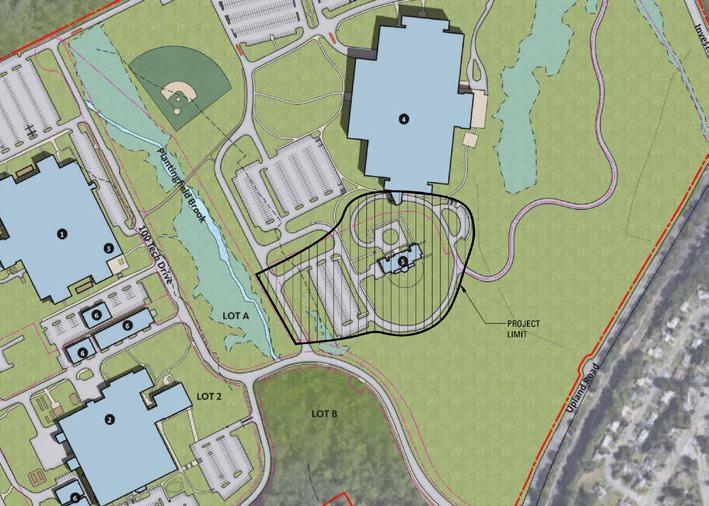
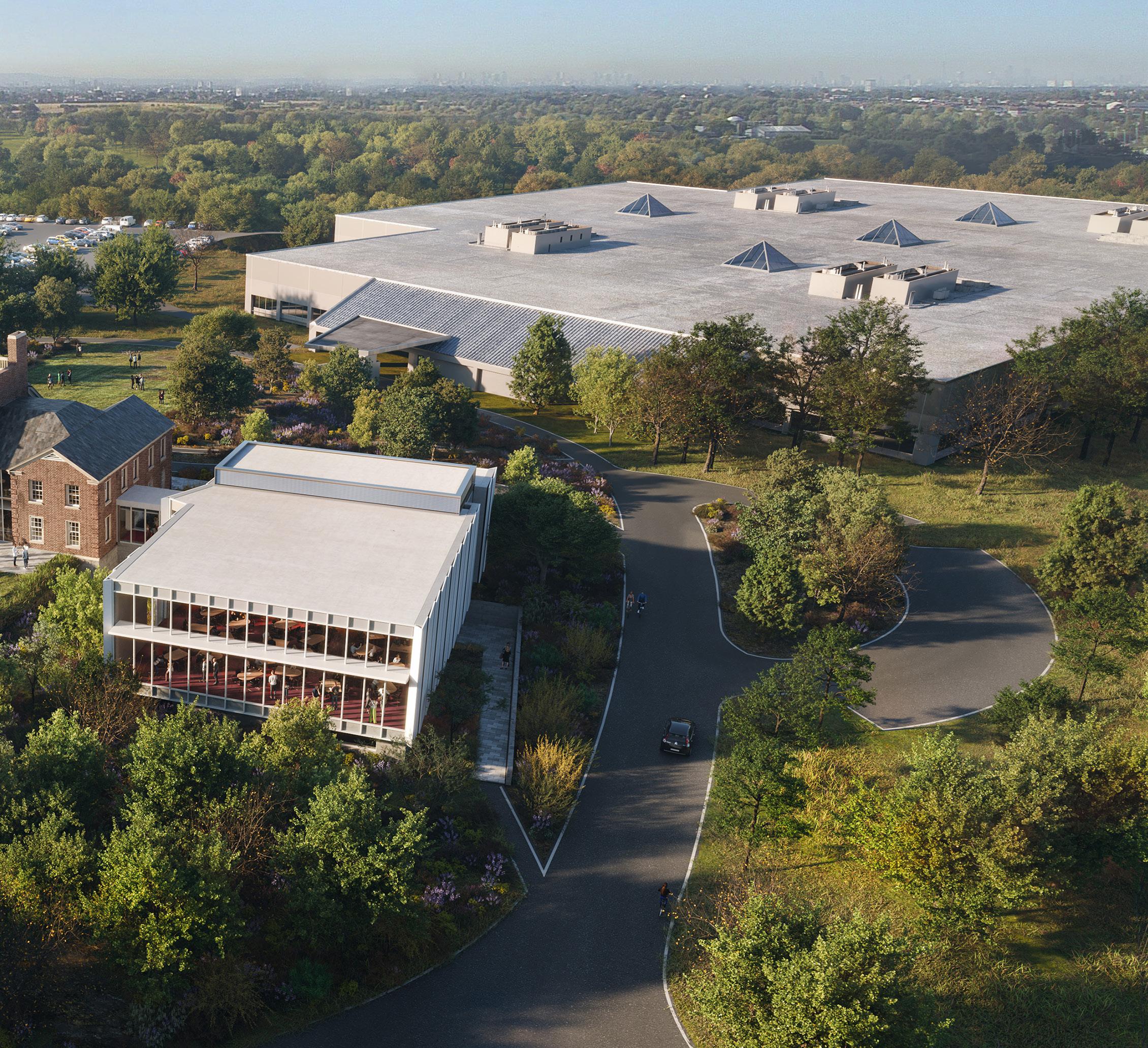
Clear contrast between historic mansion elements and hightech elements on the exterior and interior of the project

Improved vertical and horizontal circulation to increase wayfinding throughout the mansion and into the additions

Enhanced physical and visual connection to natural landscapes on site and beyond

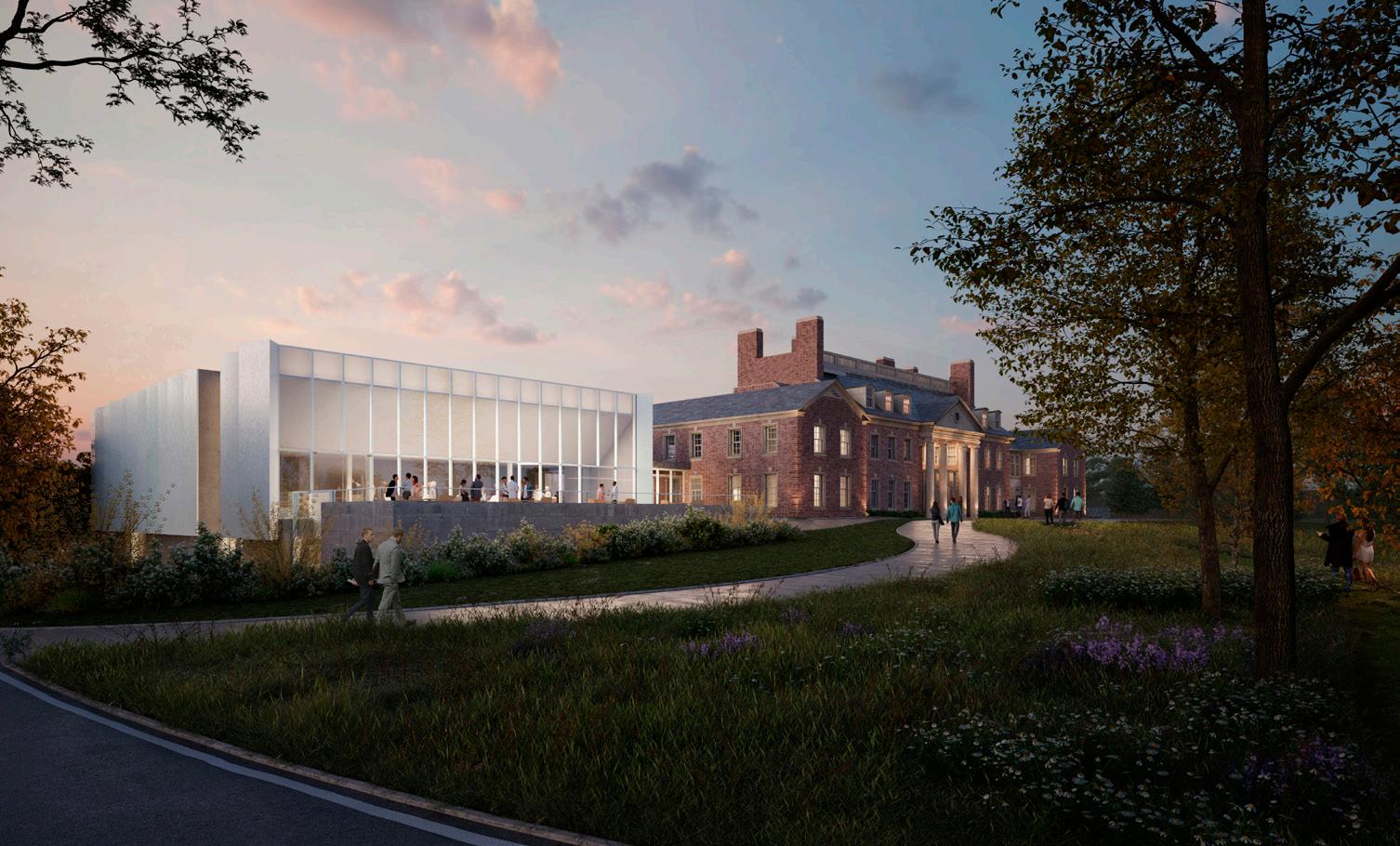






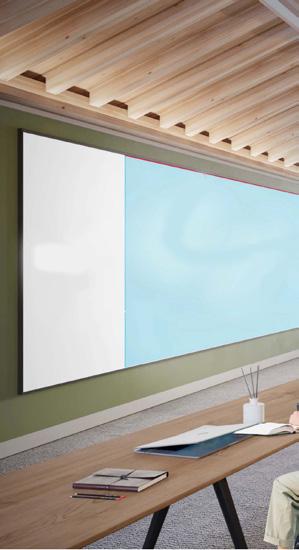
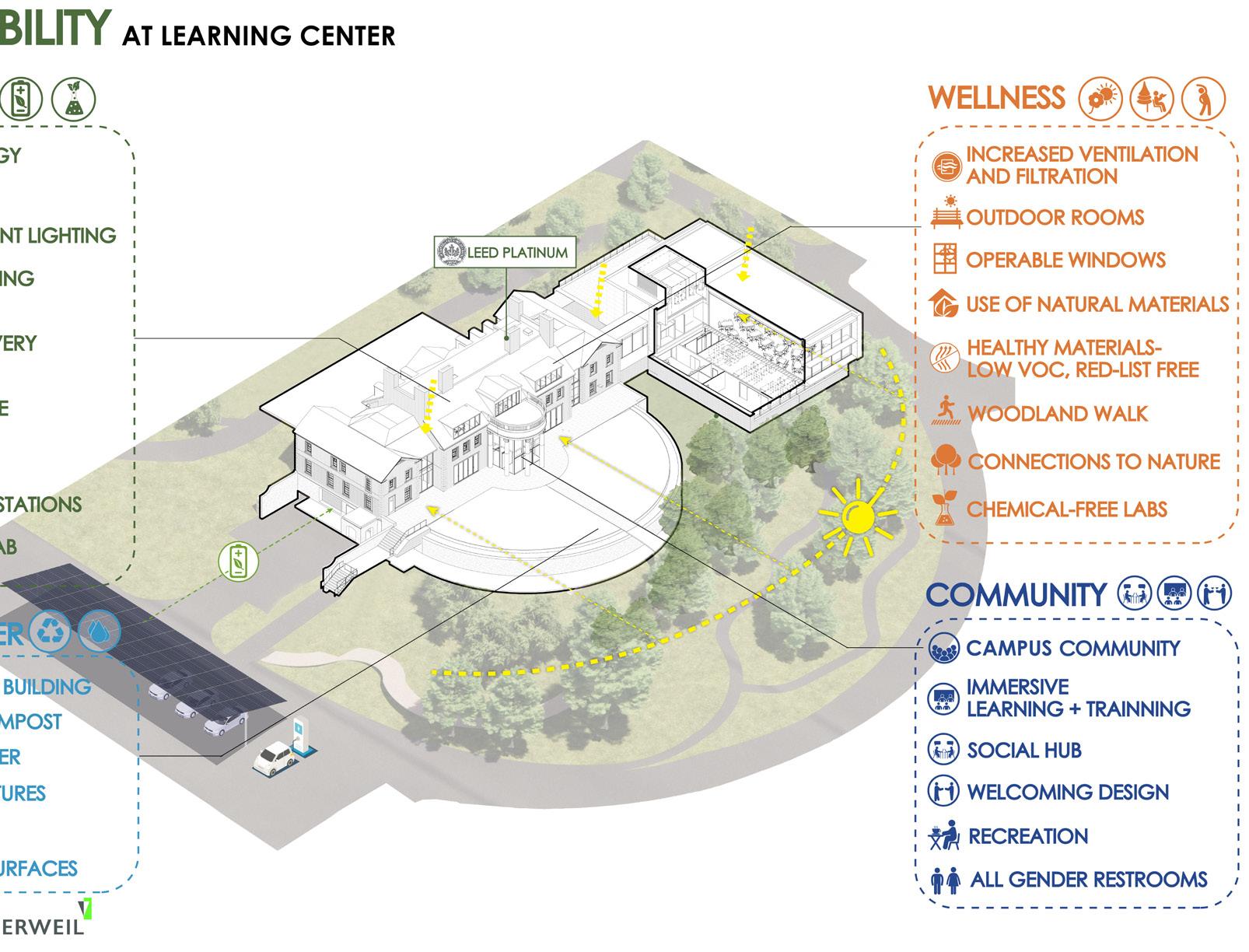



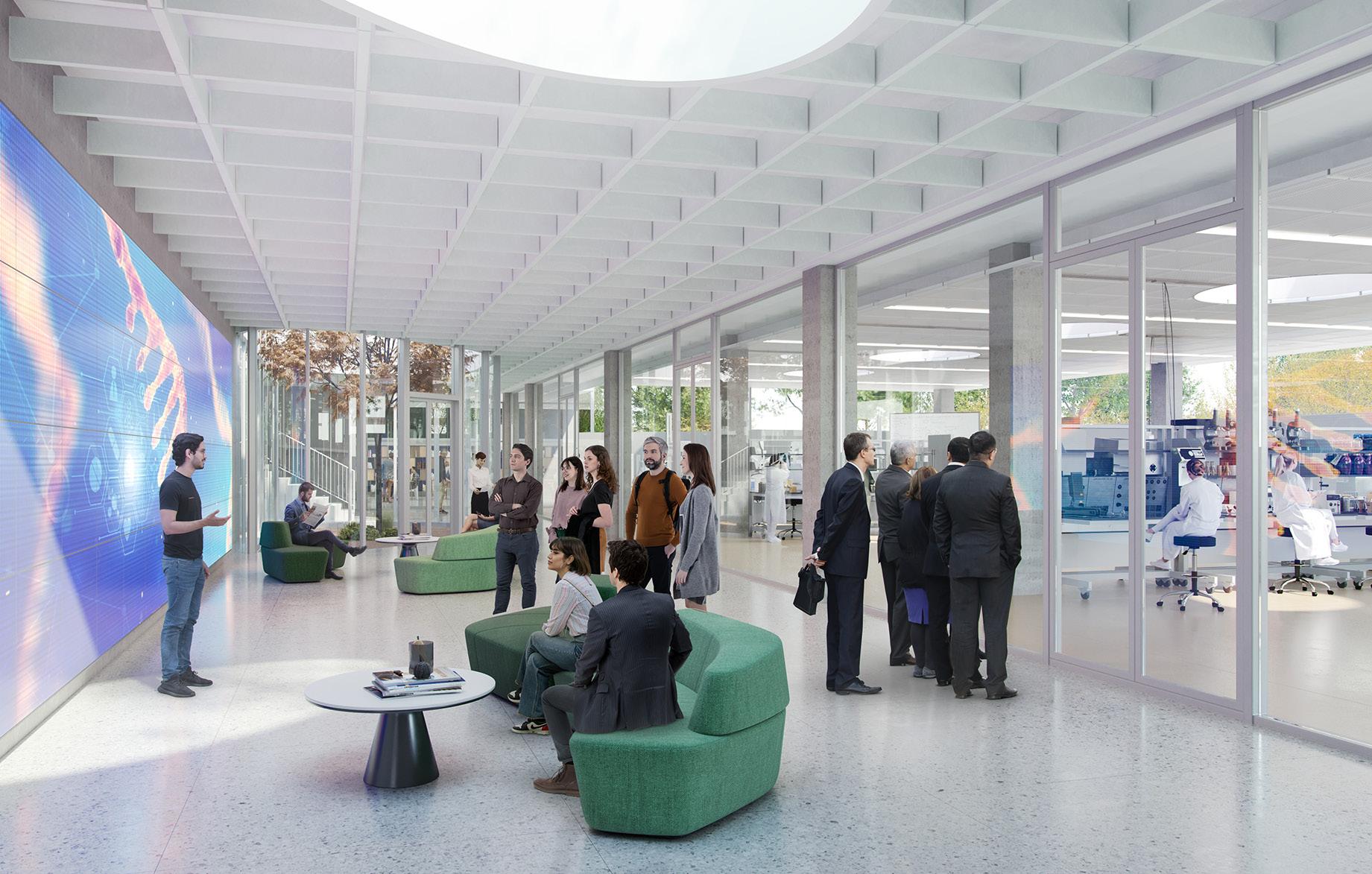

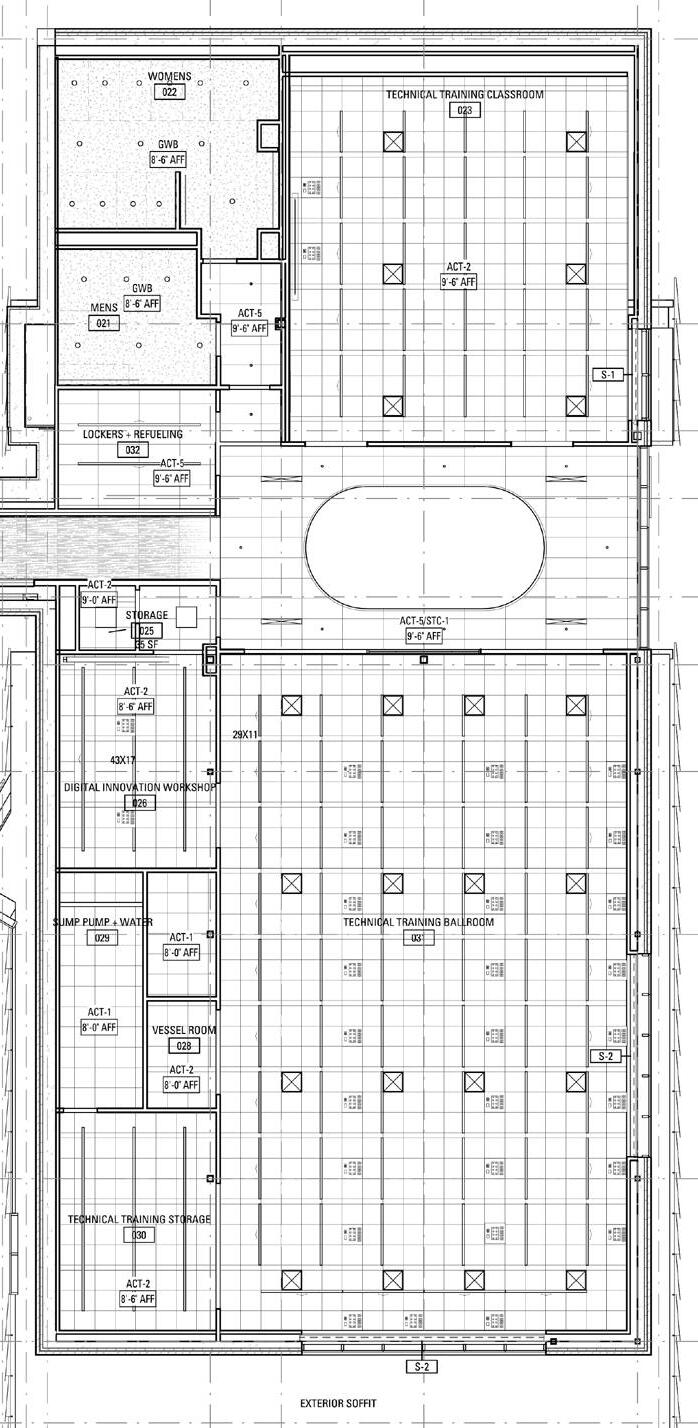



Overall Floor Plan - First Floor

Reflected Ceiling Plan- First Floor


Leraning Hall Facade Study

Interior Design Study
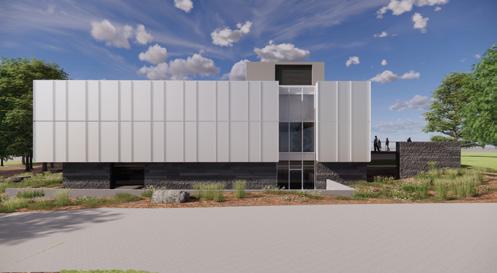



Architectural Drawings


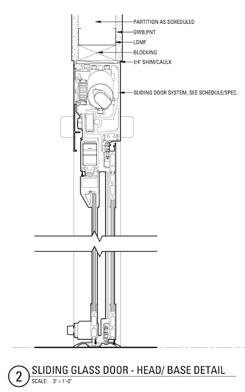
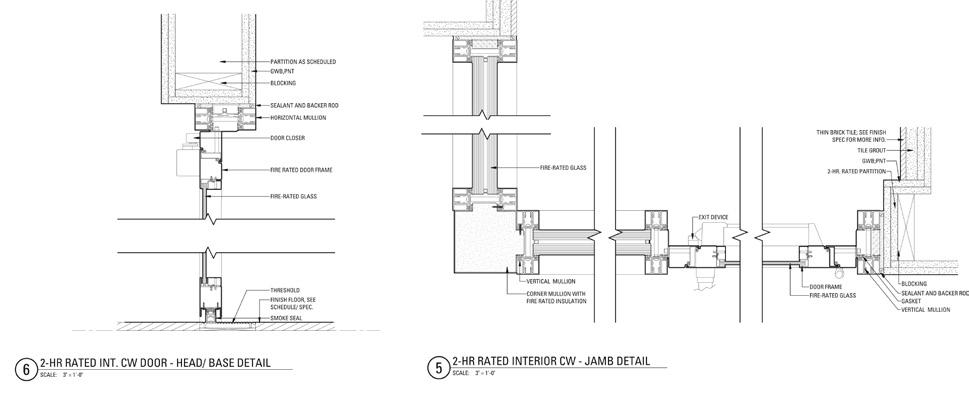
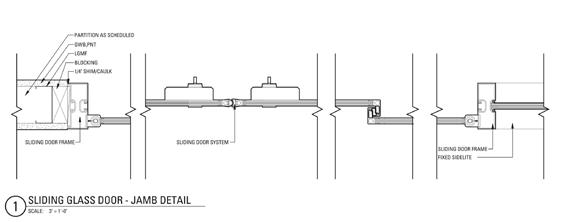
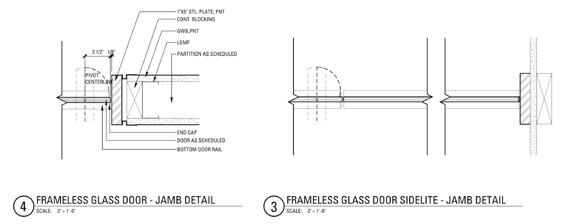
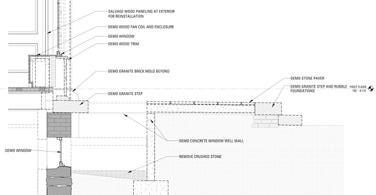

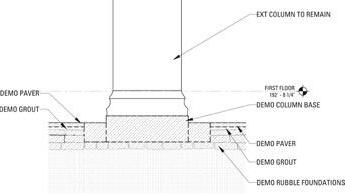





Professional Work
Project Phase Participation:
DD - CD Phase | 2024.10 - Current
Role in Project:
Project Designer
Location:
Boston, Massachusetts
Boston City Hall
This project aims
The main goals
1. Add a new transaction
2. Replace and accessible
3. Make changes maintaining
This project levels. By bringing closer to the original vision

Hall is a nine-story cast-in-place and precast concrete building that opened to the public in 1969. aims to improve accessibility to key public parts of Boston City Hall. goals are:
new elevator that connects 4 levels, providing better accessibility between the public lobby and transaction areas.
the existing escalators, which have reached the end of their serviceable life, with a more open accessible staircase design.
changes to the curtain wall system at the public lobby level to accommodate the new elevator while maintaining the original design intent and material palette.
will significantly enhance accessibility, strengthen connections, and revitalize the transaction bringing key public functions—including public-facing services, event spaces, and meeting areas— plaza, it will foster a stronger relationship between the people and the building, reinforcing the vision for this space


Currently, reaching level M from the main Plaza Lobby requires accessible users to take the South Elevator to another floor, cross the building, and then use the North Elevator. In contrast, those using stairs or the escalator can simply pass through a set of doors and go down half a level. The existing escalators original to the building and are reported to be at the end of their serviceable lives.

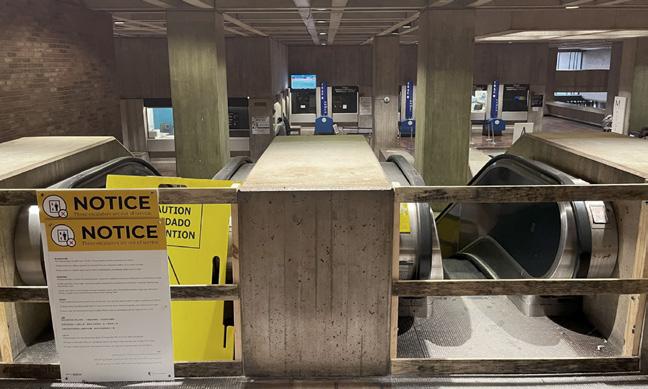

New curtain wall enclosure at level 4
New 4-stop front / rear elevator with glass hoistway enclosure at level 4 and CFMF & GWB hoistway enclosure at levels 2 &3
Re-install concrete ceiling grid at new elevation
New floor landing at level 2M for elevator vestibule

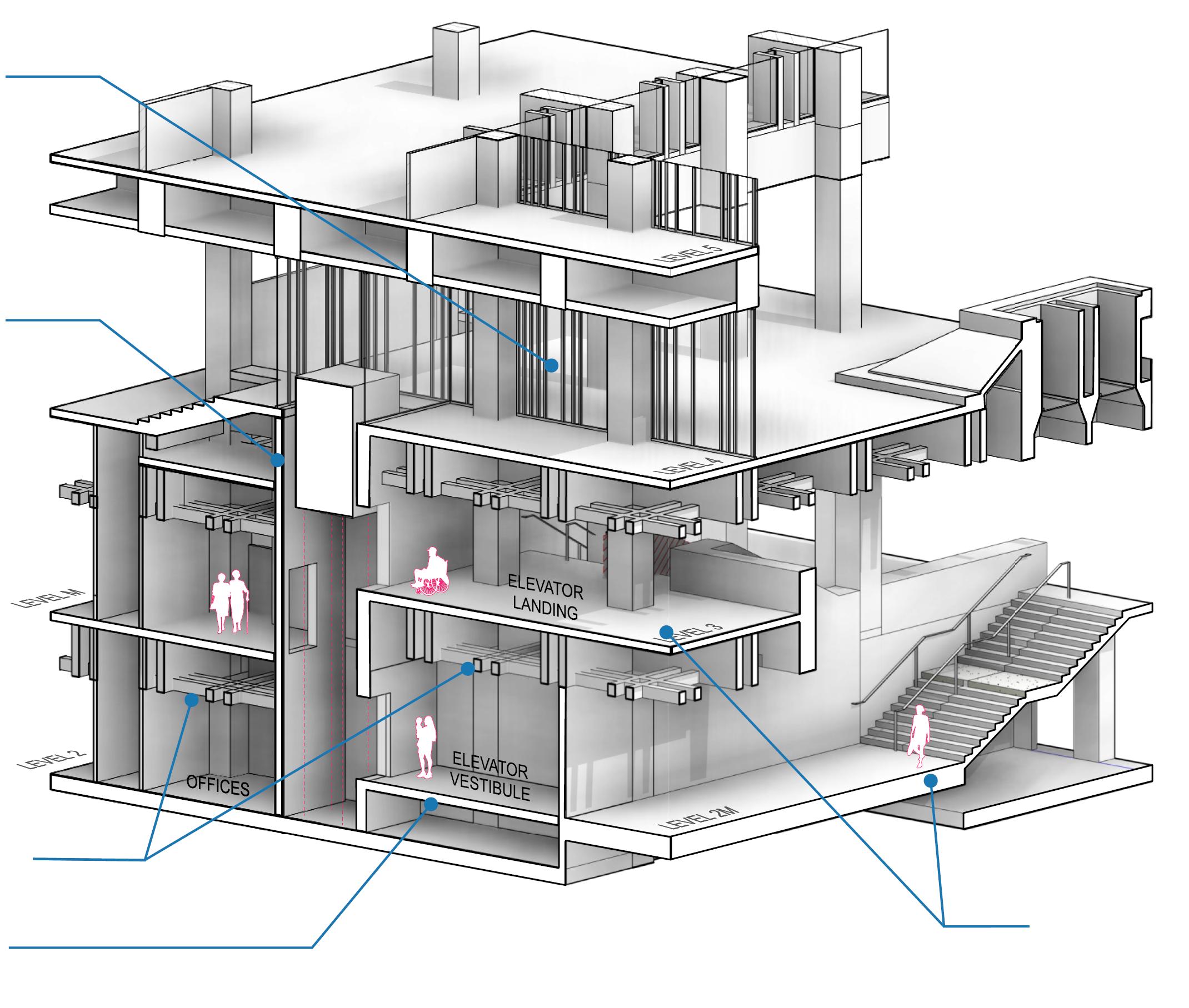
New expanded stairs w/ bronze handrails to replace existing stairs, escalators, and concrete guardrails
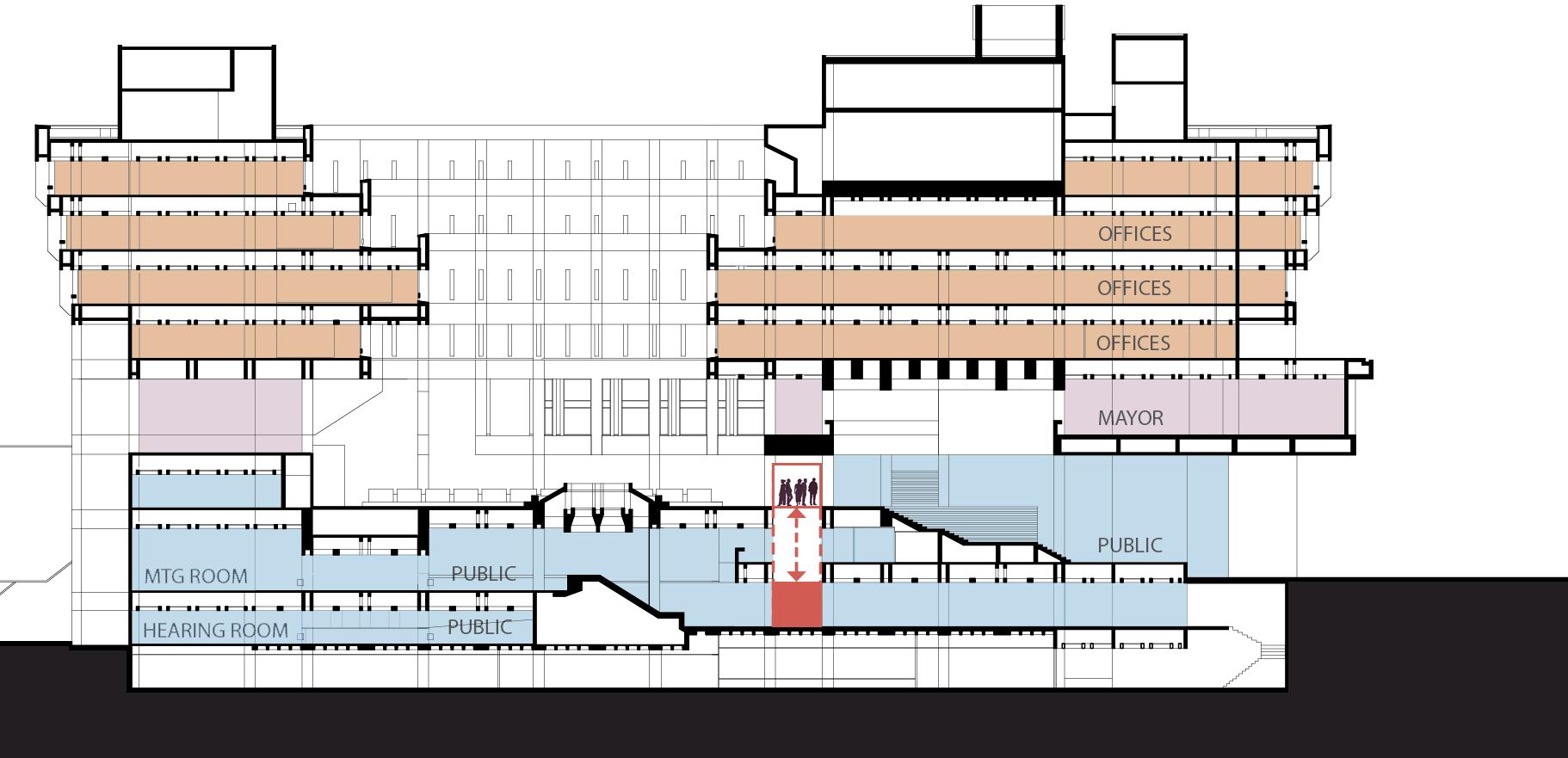
Level M - Exisiting

Level 2M - Exisiting
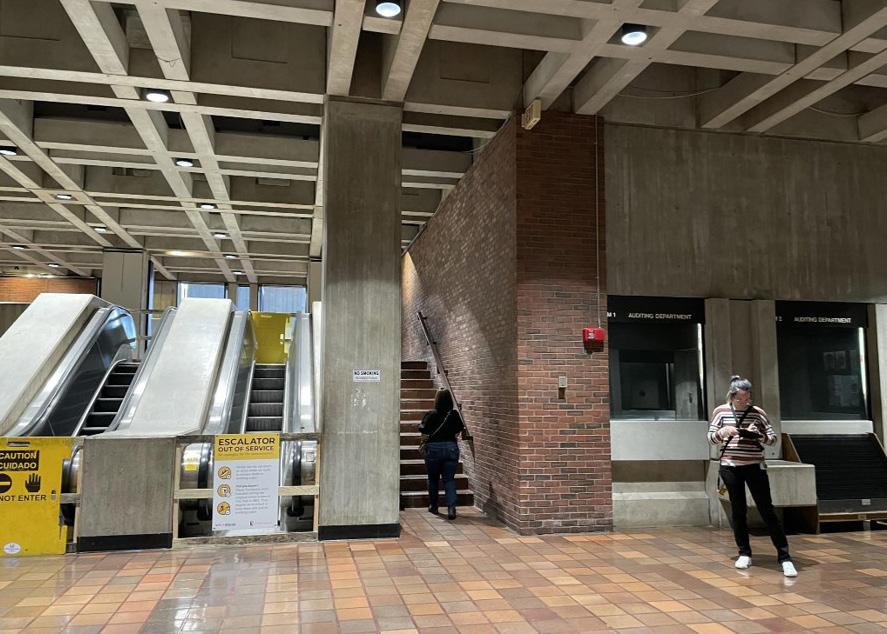
Level 3 - Exisiting

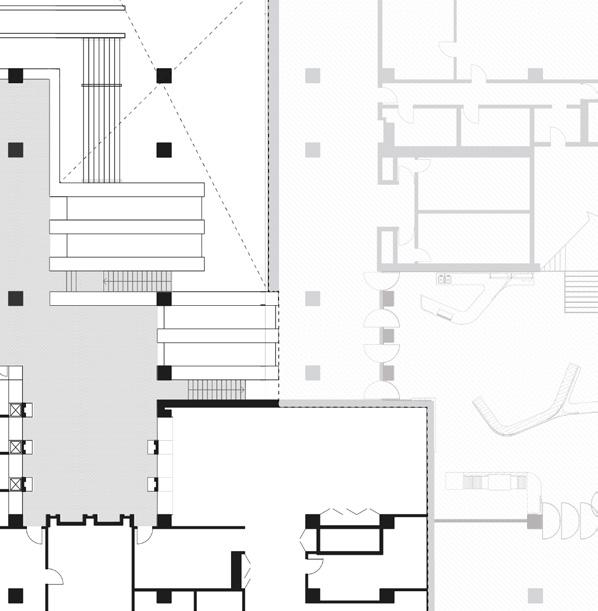
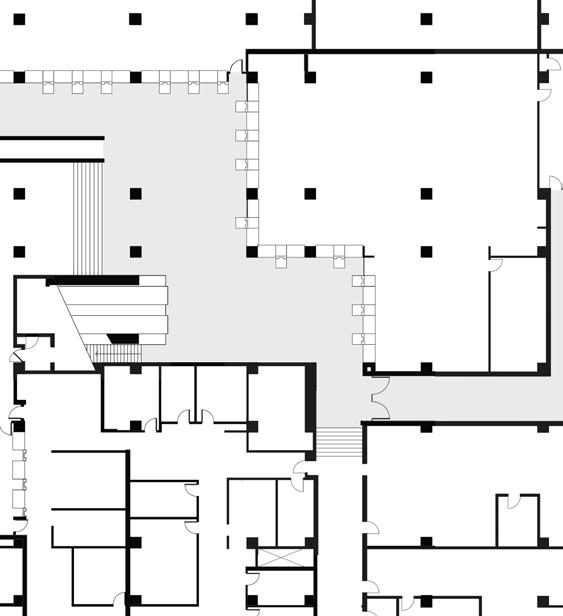

Level M - Proposed

Level 2M - Proposed
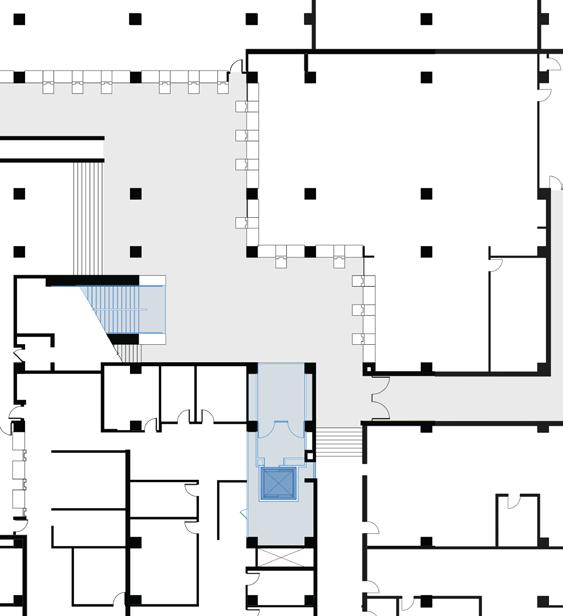
Level 3 - Proposed




Level 4 is a key public space in city hall, often used for mayoral speeches and events. The adjacent courtyard was closed after 9/11 due to security concerns.
By extending the enclosure line, a portion of the underutilized courtyard has been transformed into interior space, enhancing the plaza area at the top of the stairs while accommodating a new elevator connecting four floors. The new enclosure preserves the spatial relationship of the open arcade, designed to complement the existing architecture without direct imitation.

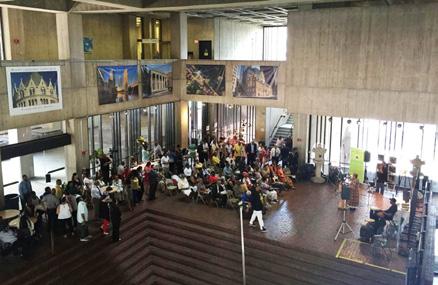
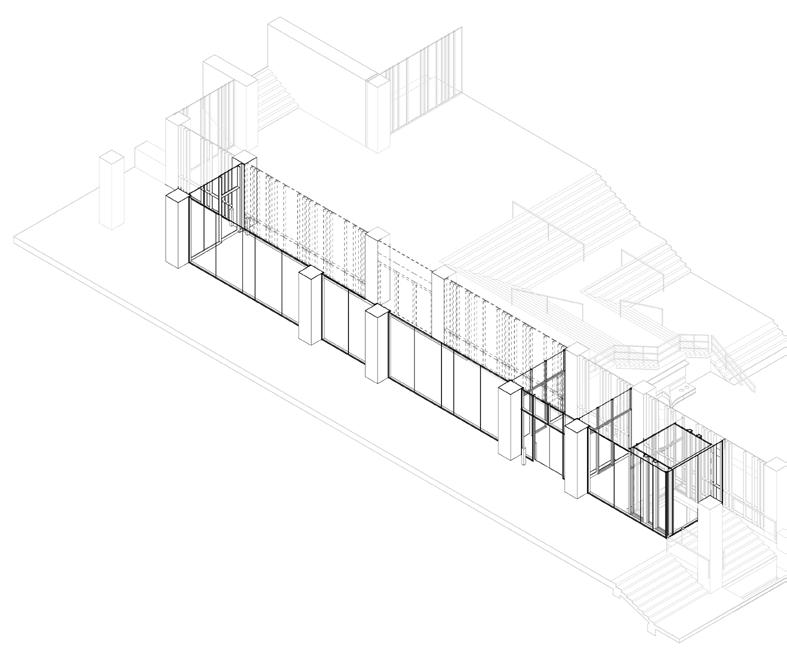

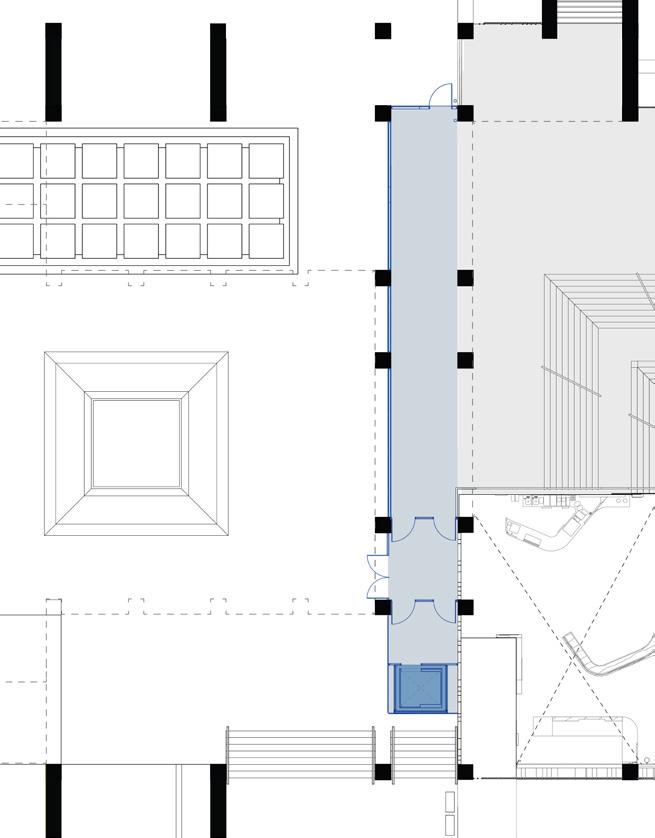


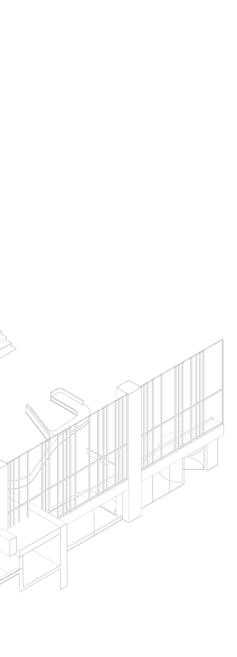


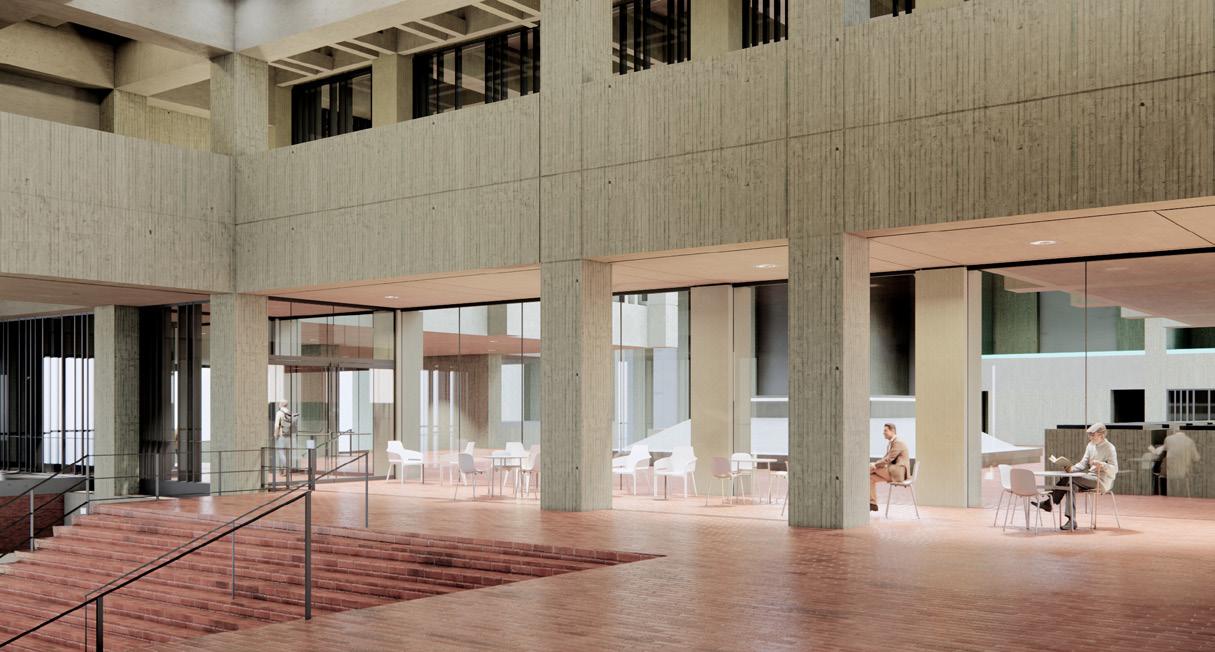


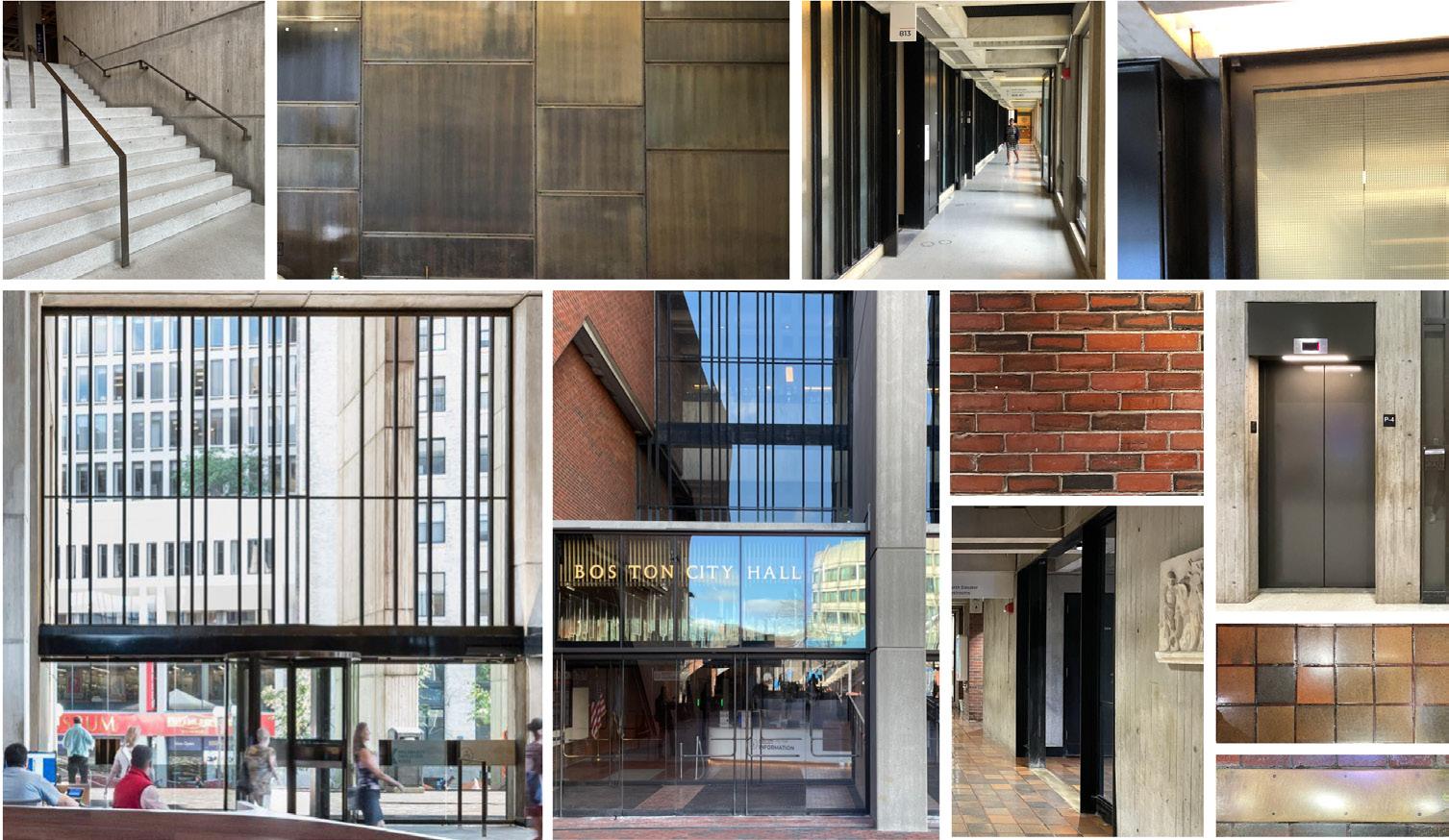

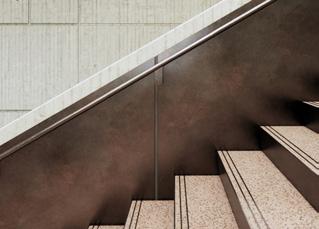





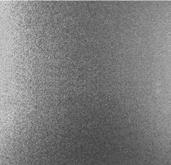
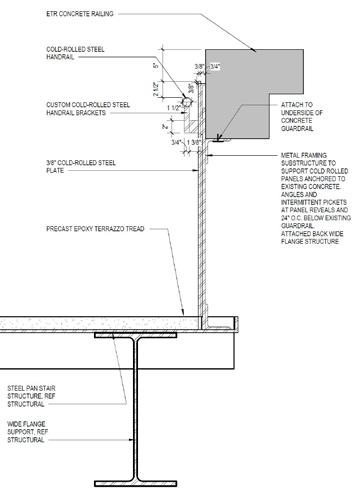
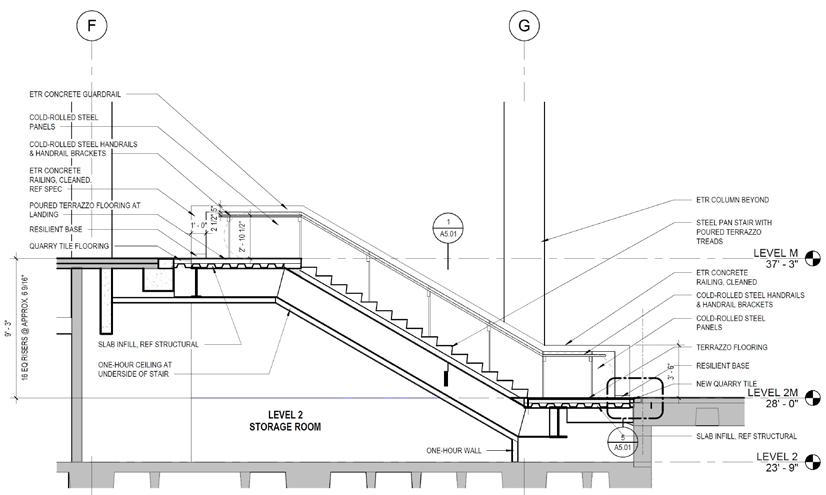

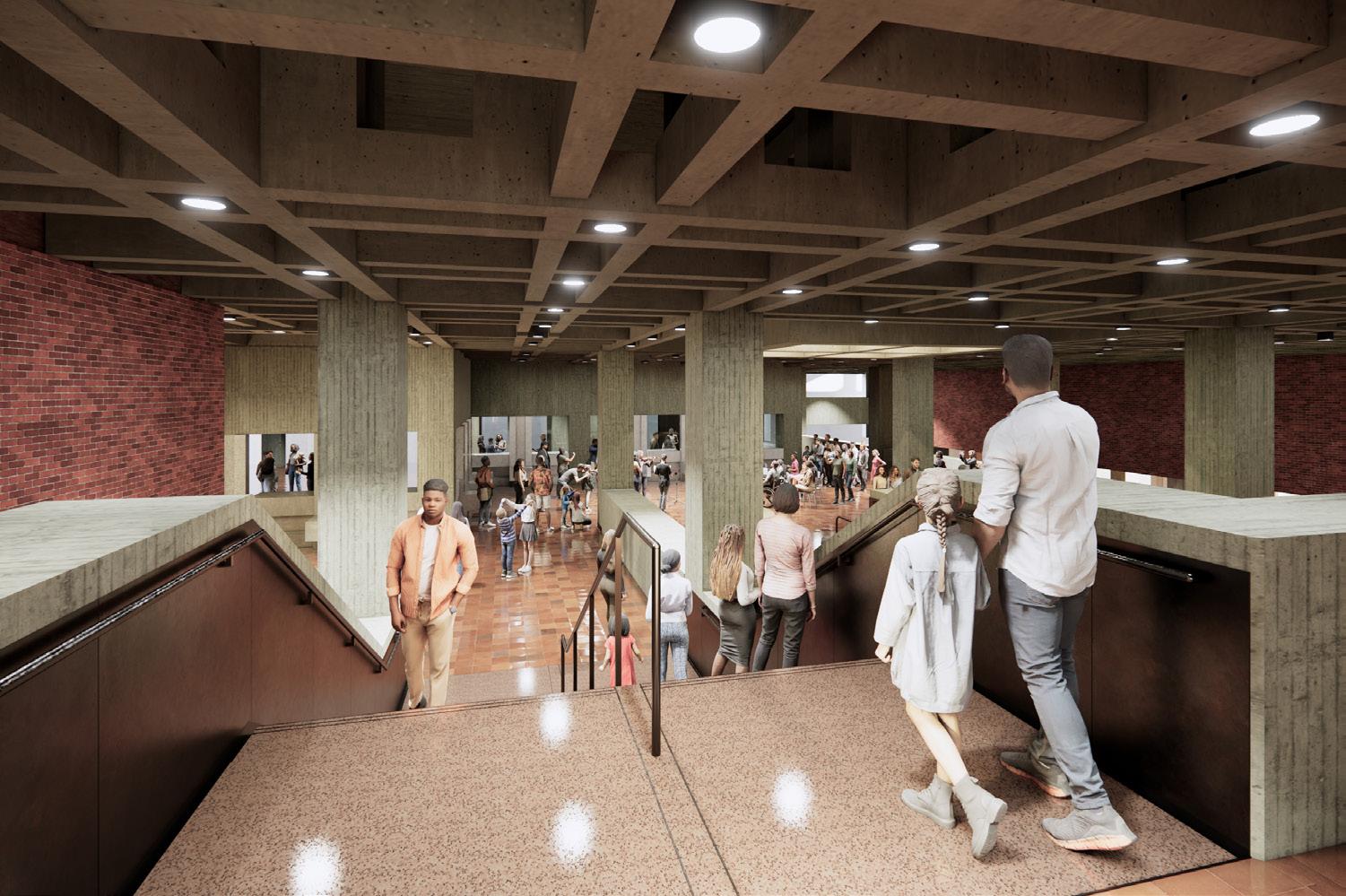

Level 2M - Proposed Plan
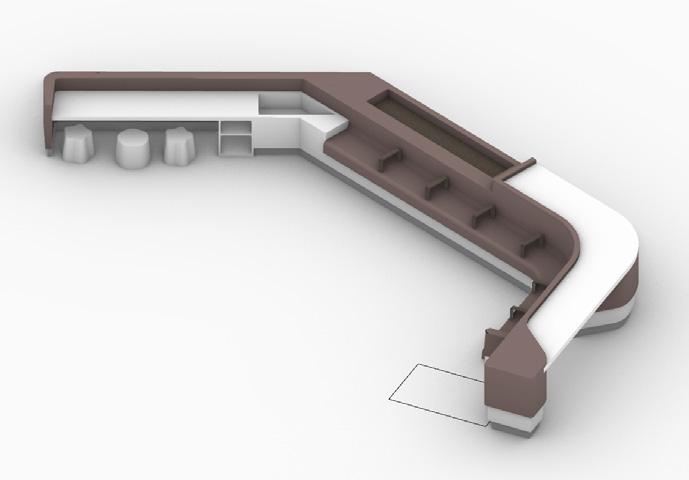
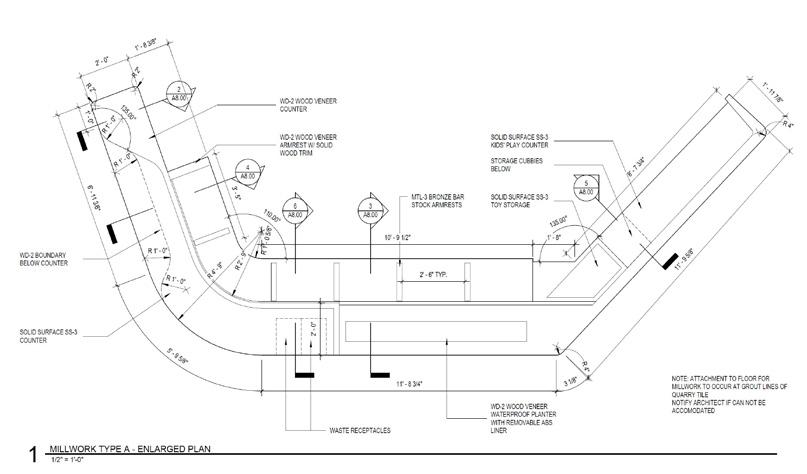

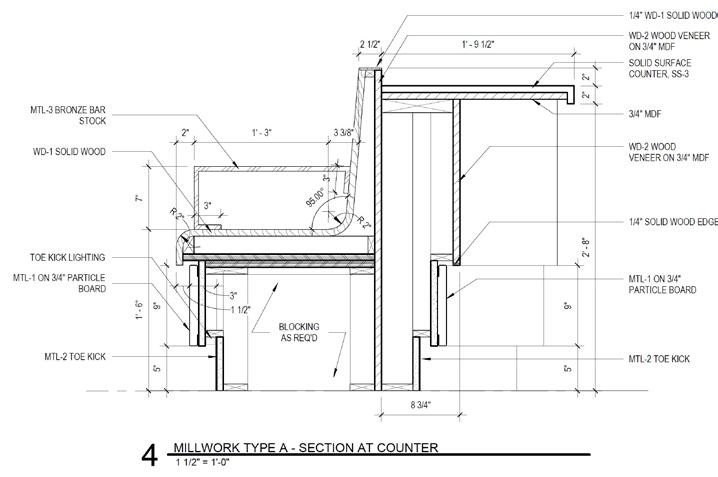
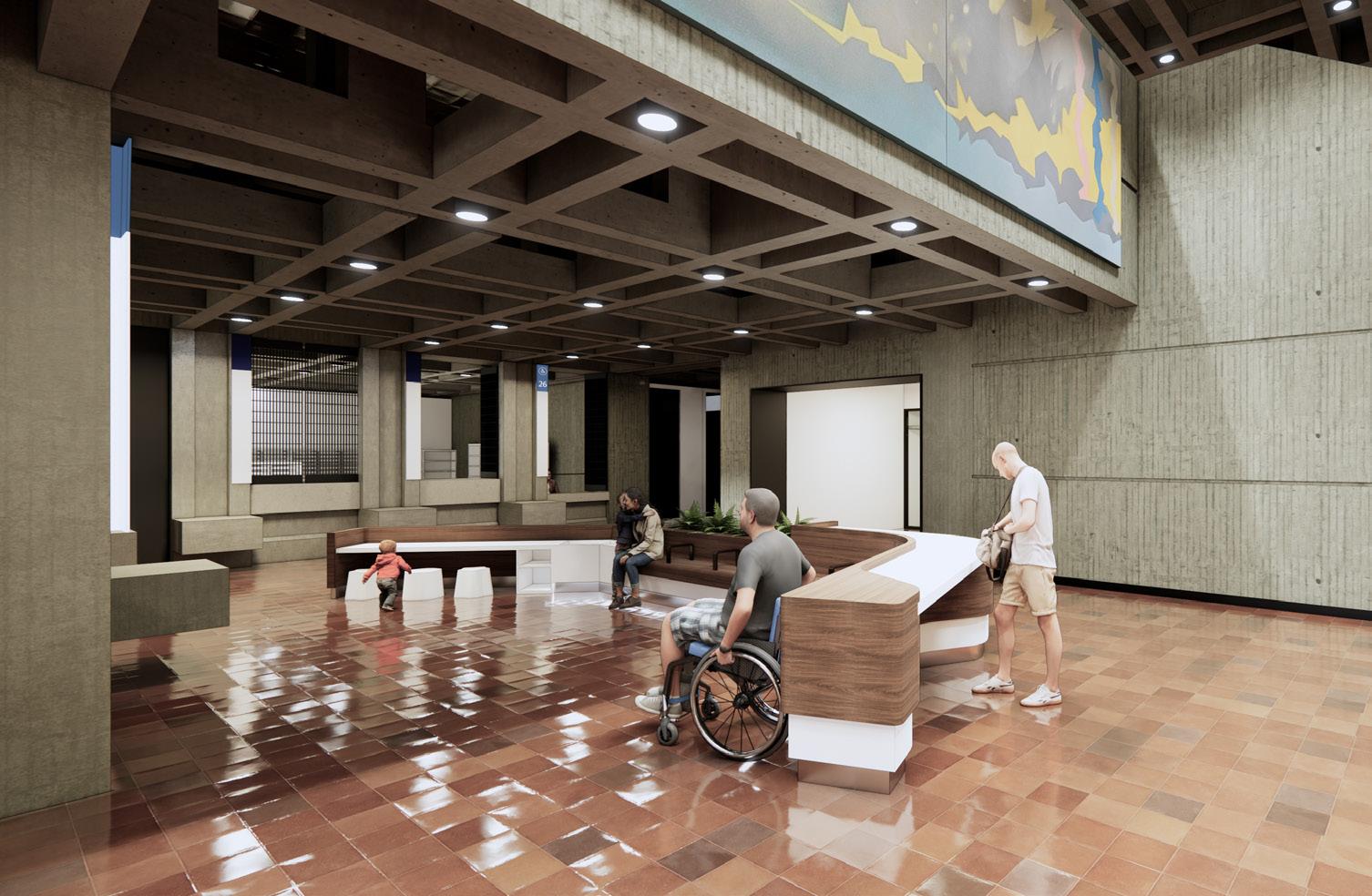
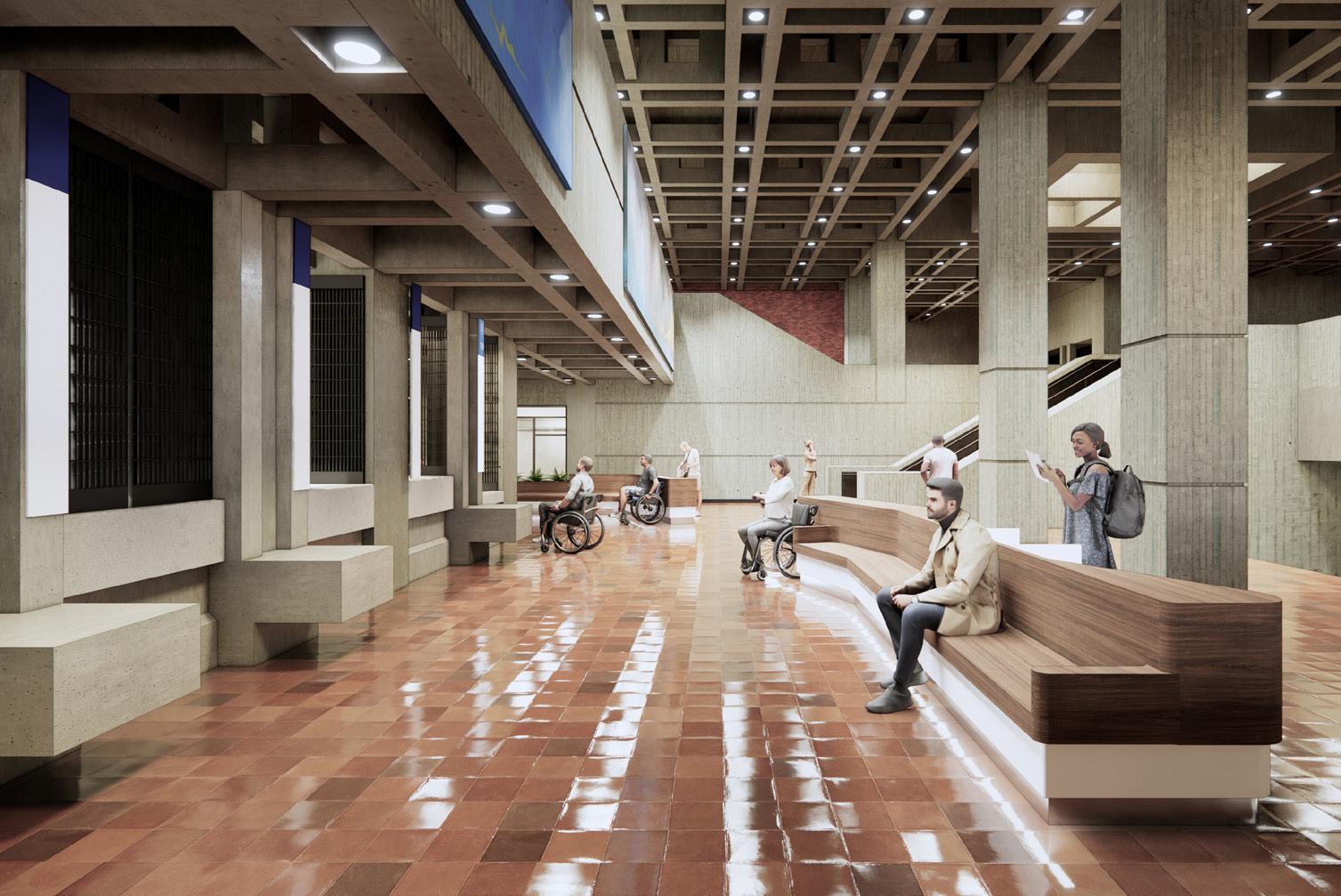

Level
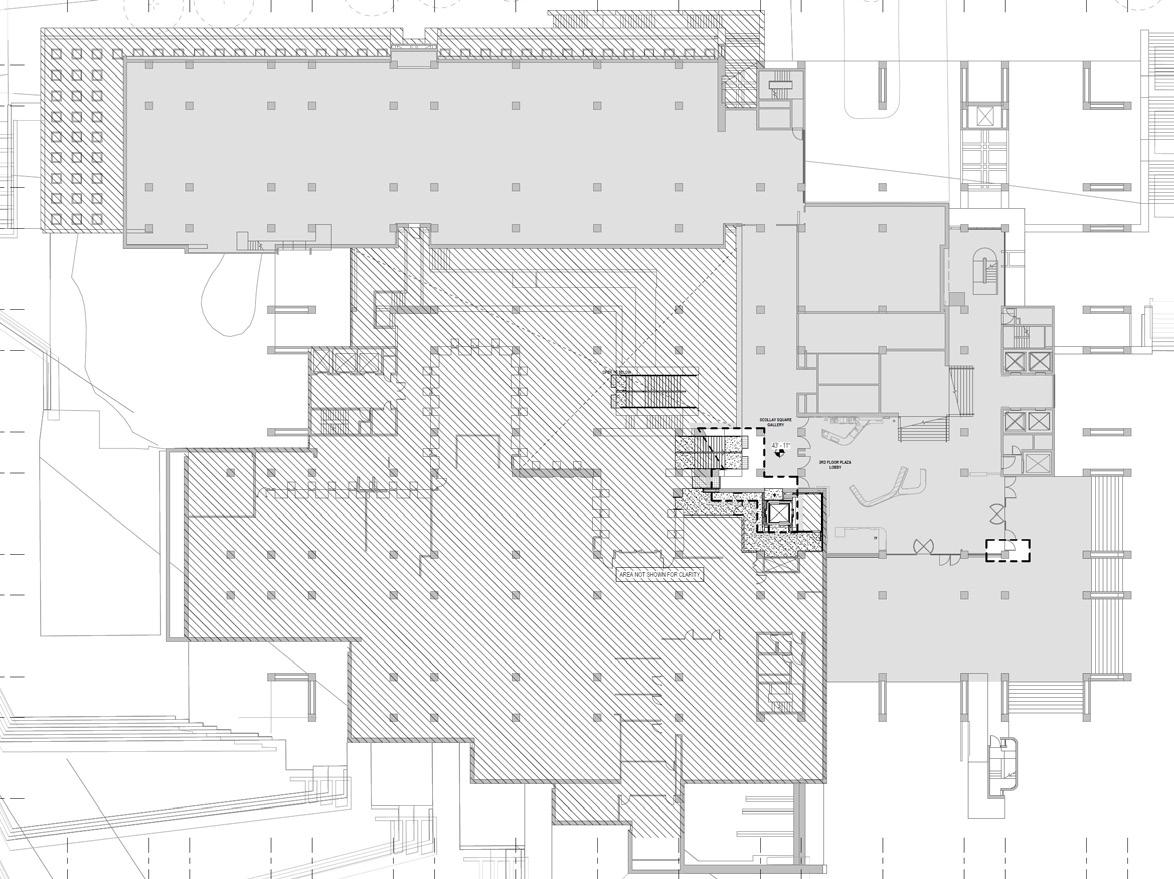
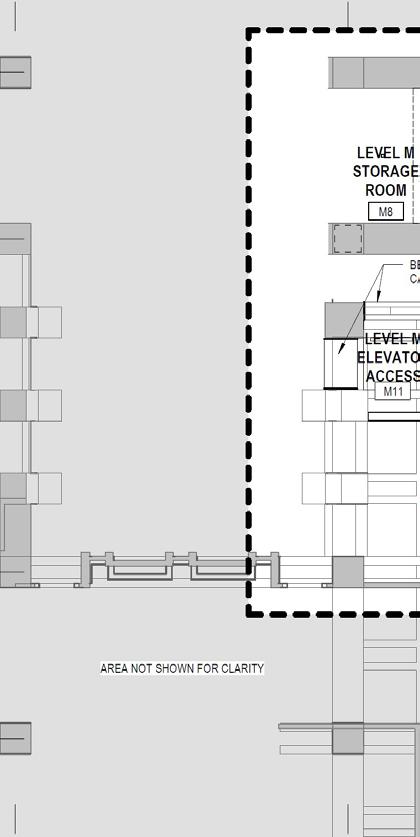

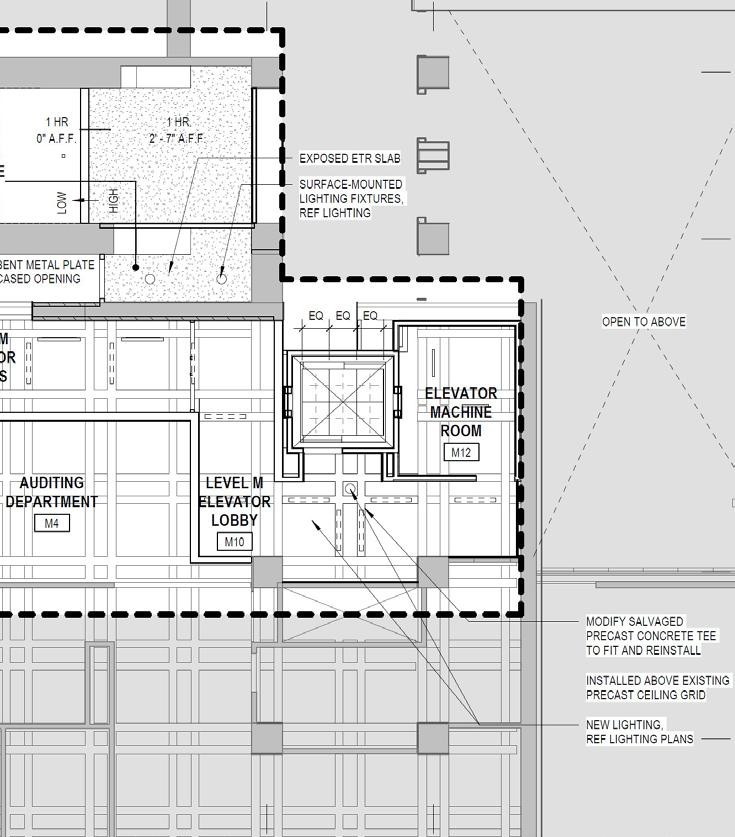
Level M - RCP
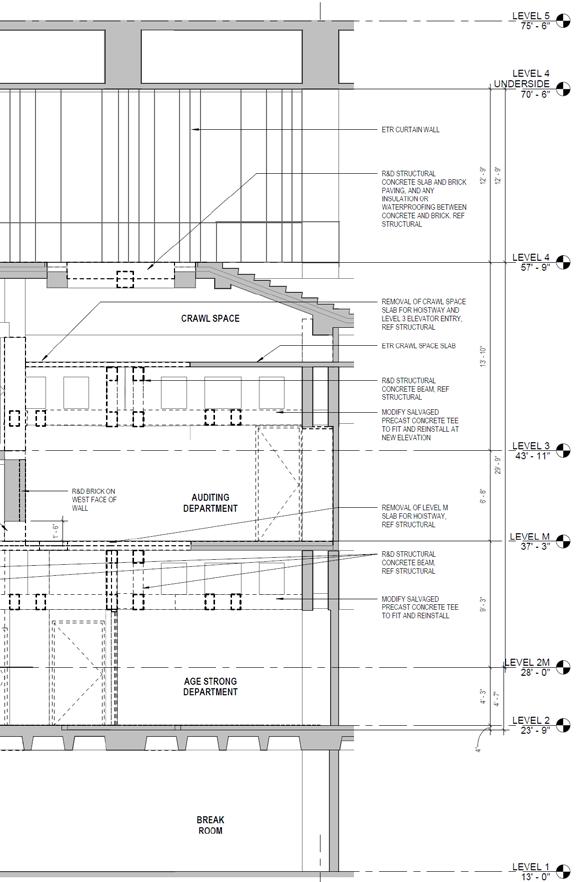
Section @ Elevator E-W

West Elevation At Cased Opening On LEVEL 3 And LEVEL M
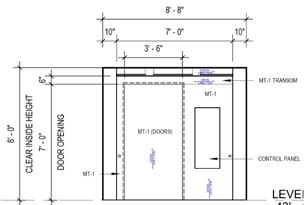
Elevator-Fornt Elevation

Elevator-Rear Elevation
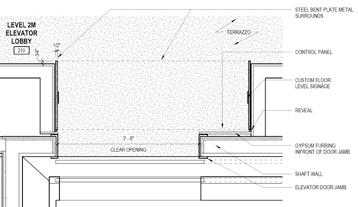
Elevator Bent Metal Plate Cased Opening

Section @ Elevator E-W
Professional Work
Project Phase Participation:
Concept - SD - CD -CA | 2024.4-2024.12
Role in Project:
Project Designer
Location:
Cambridge, Massachusetts
Project Scope
The Harvard University Herbaria Renovation project has two main parts.
The first part focuses on the lobby area. The existing lobby featured several height differences, creating accessibility challenges. To address this, a new exterior stair and an accessible ramp were added, creating a seamless and inclusive entry system. By leveling the entire first-floor lobby, the space is now more functional and can be used as a dynamic collaboration hub with meeting rooms, a kitchen, and lounge space.
The second part involves the interior renovation, aimed at transforming underutilized space into collaborative spaces, new offices, and a meeting room to support the growth of students and the arrival of a new director. The material palette carefully follows the existing architectural language, maintaining harmony with the herbarium’s ambiance while echoing Harvard’s iconic red-brick campus.


1.Redesign entry sequence and add collaboration spaces. Enhance accessibility throughout.
2.Refreshed and relocate kitchenette to room 100.

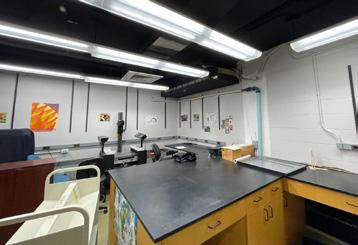
3. Combine rooms 142 and143 into one collaborative space for 12 people,with potential expansion.
4. Redesigned layout to accommodate a new director office, a meeting room abnd two student work room.
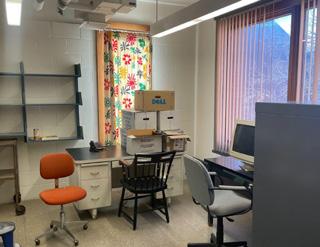


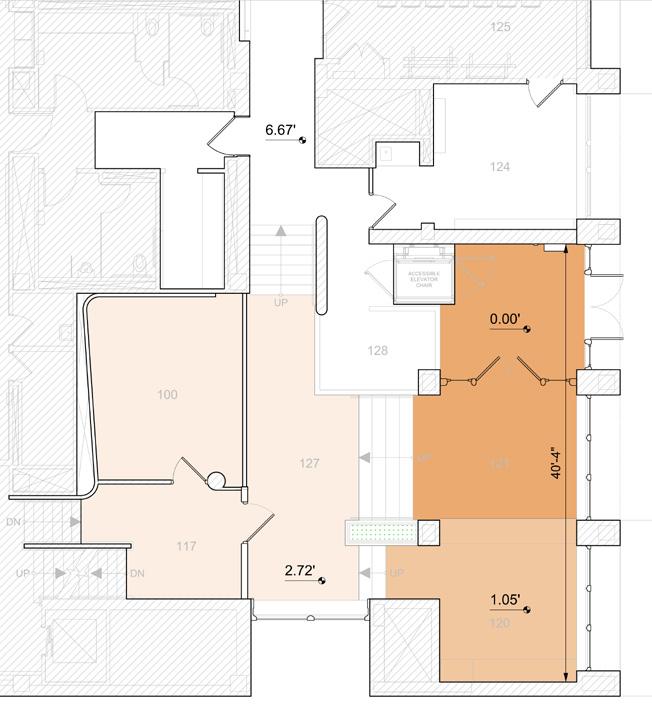



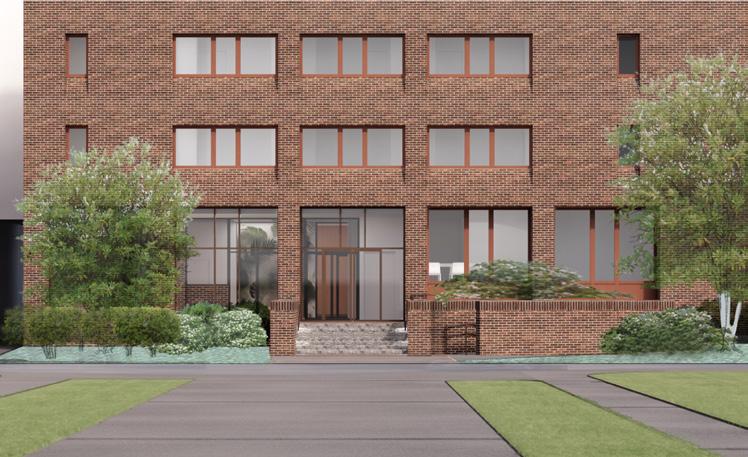



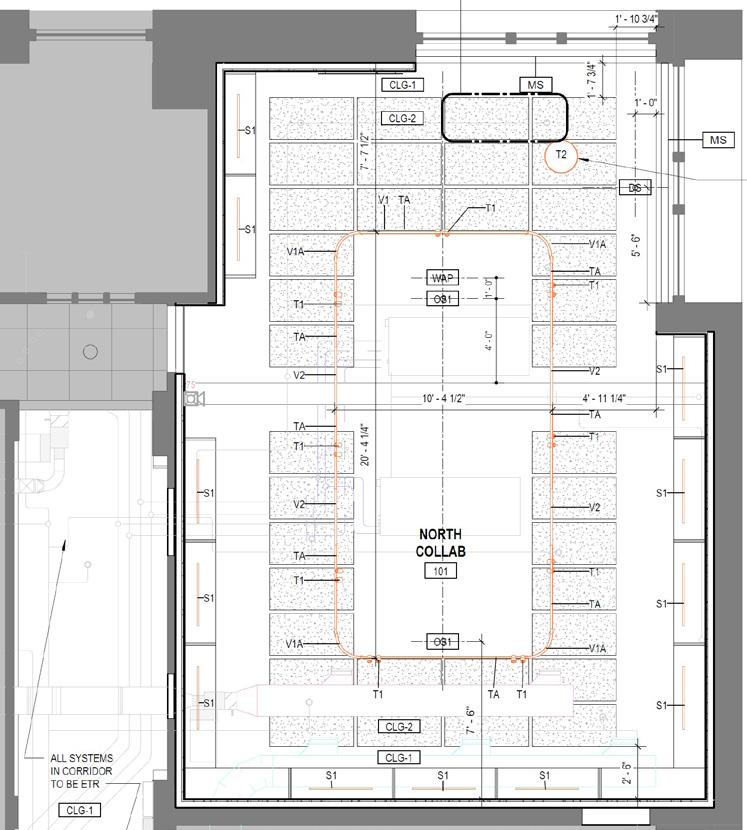

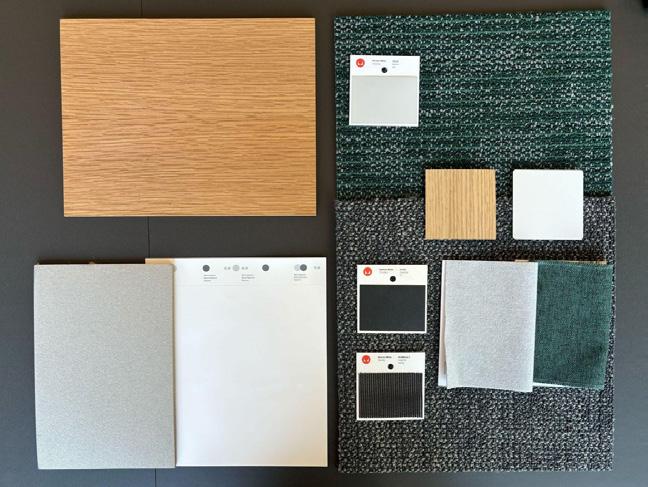



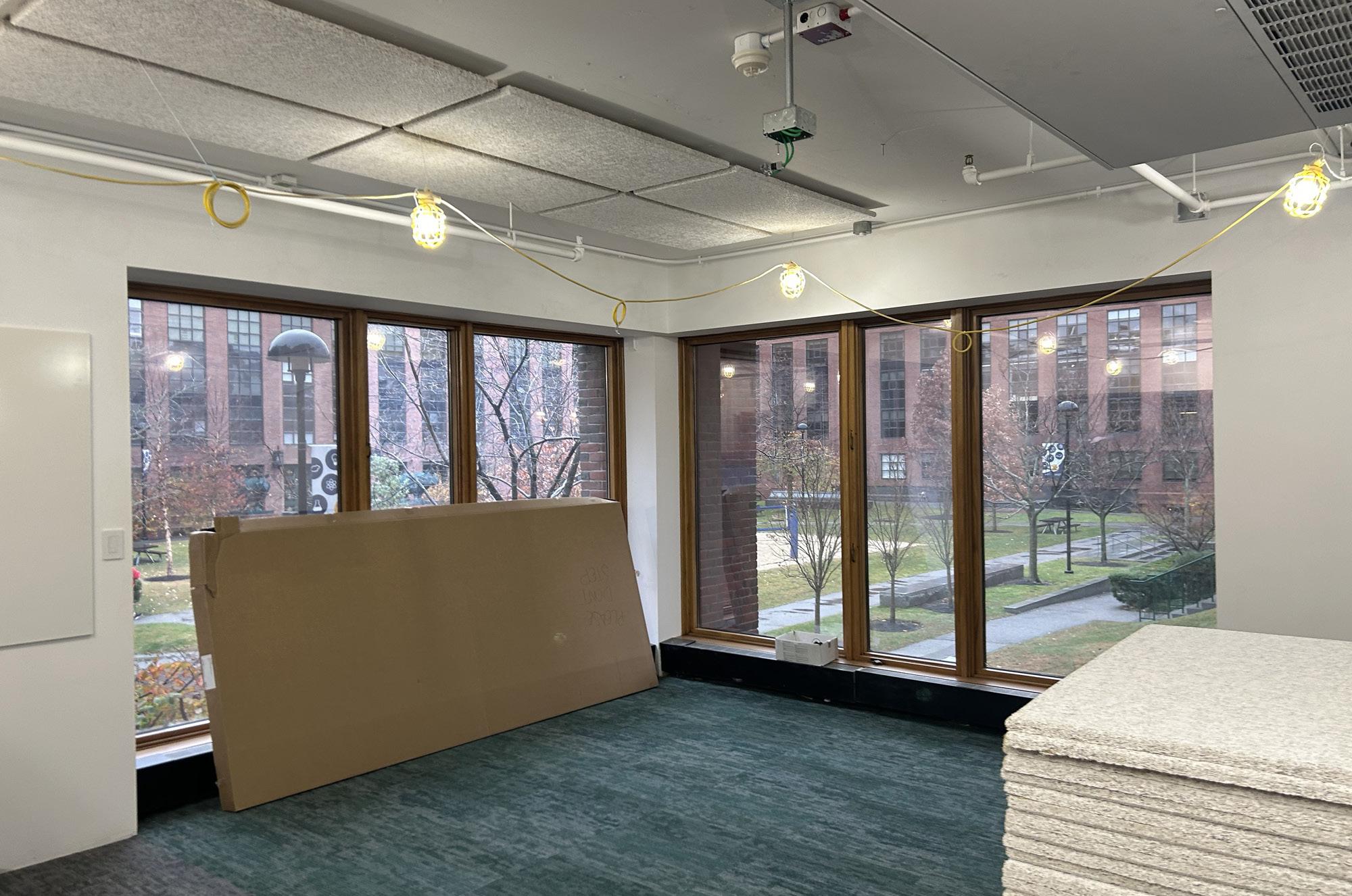



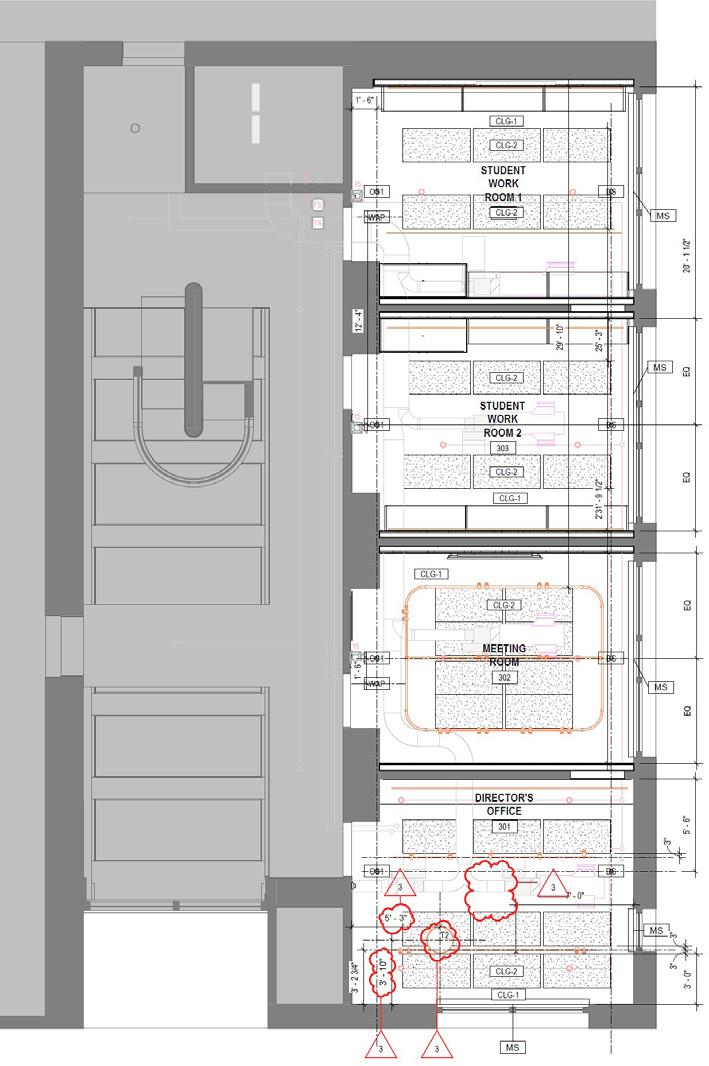

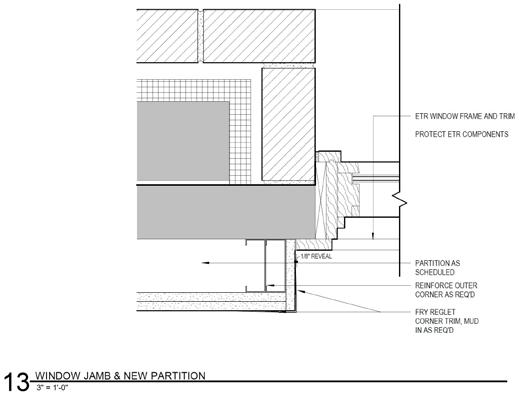




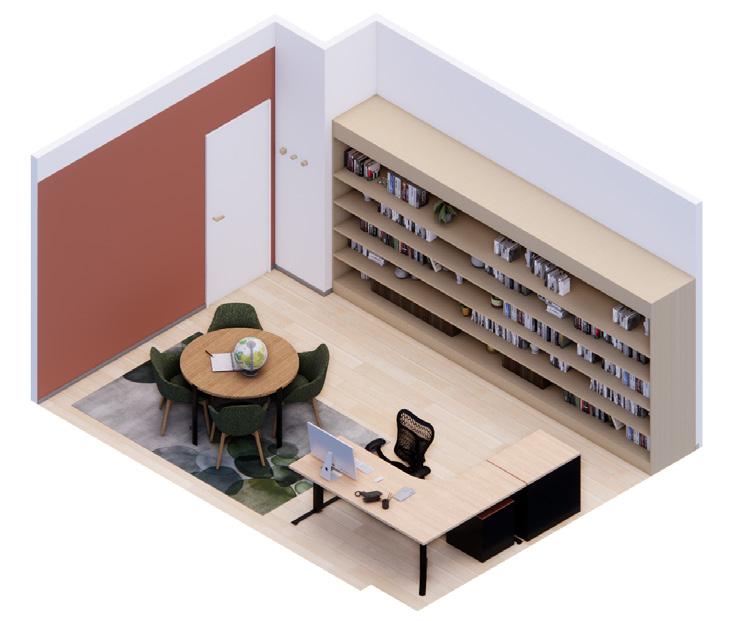



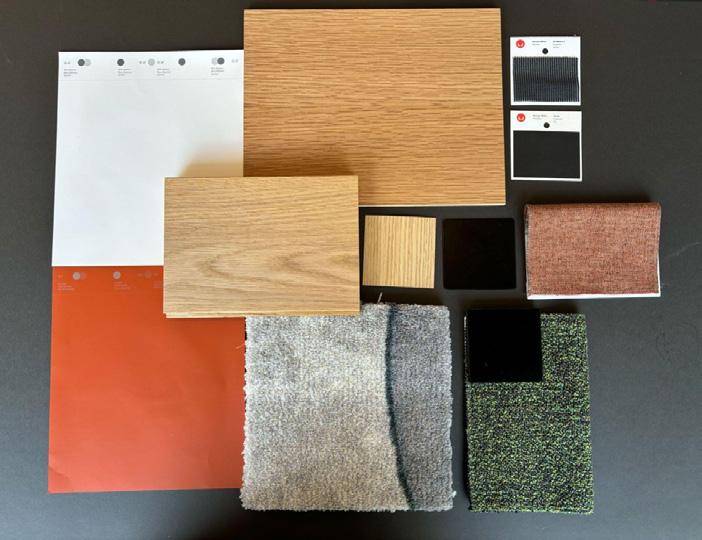



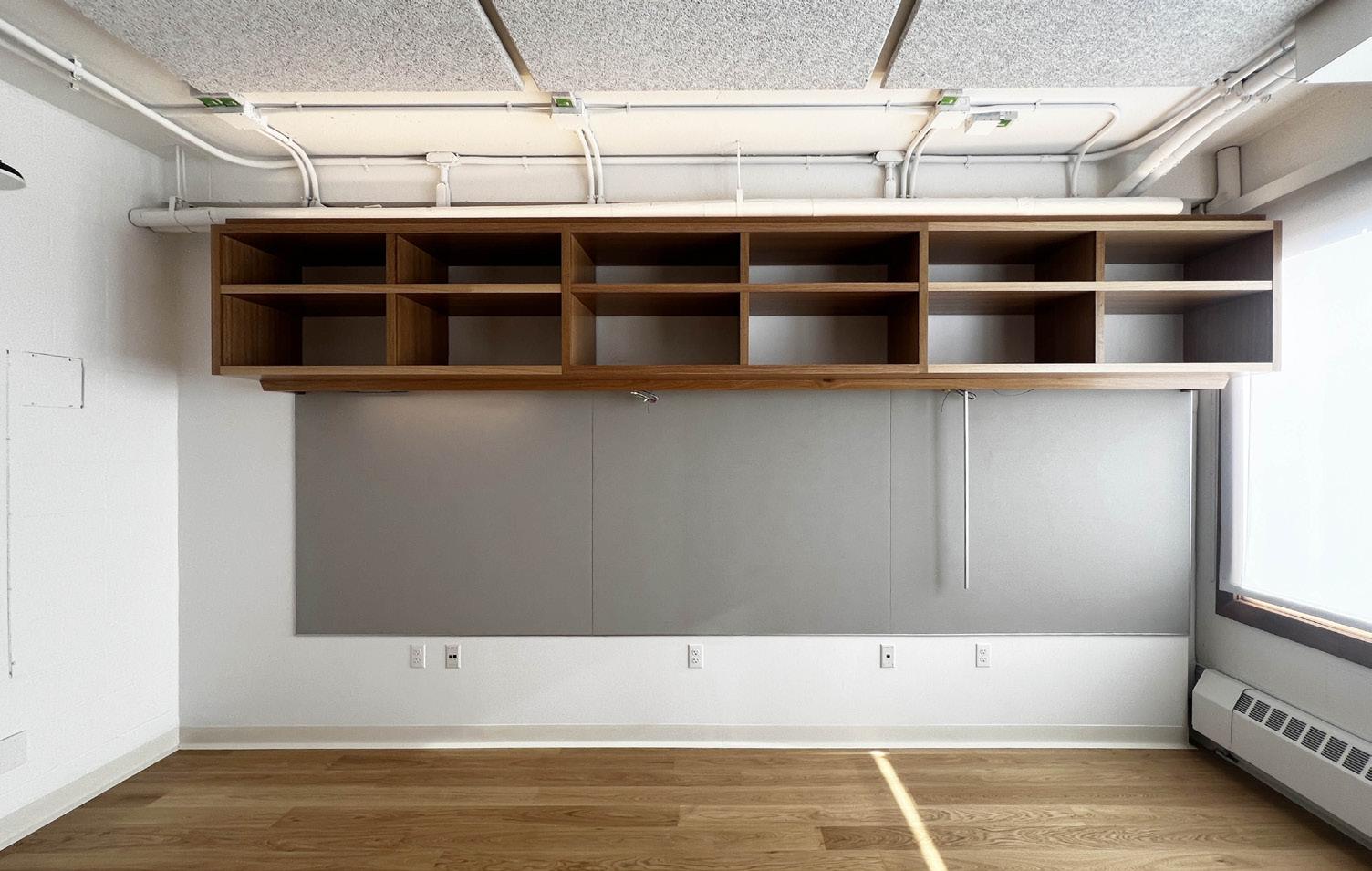


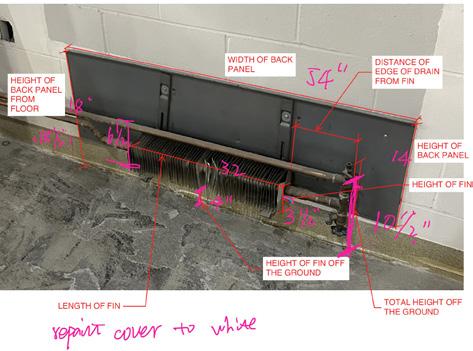
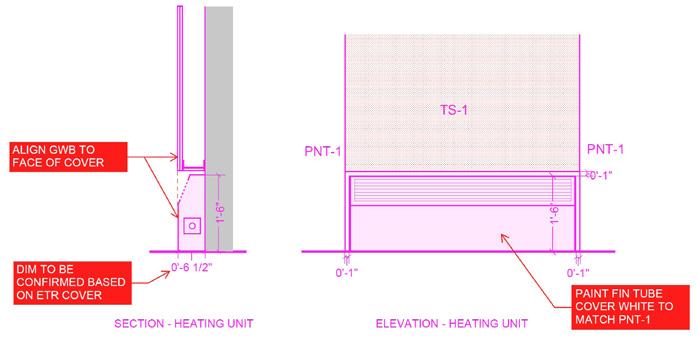
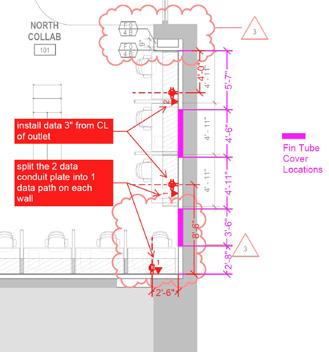
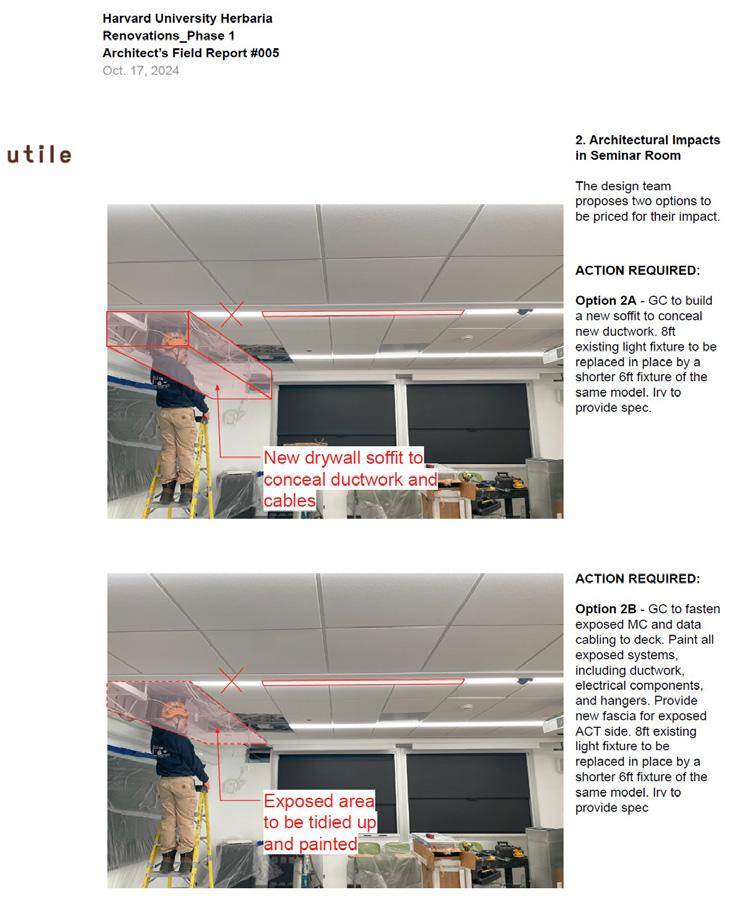
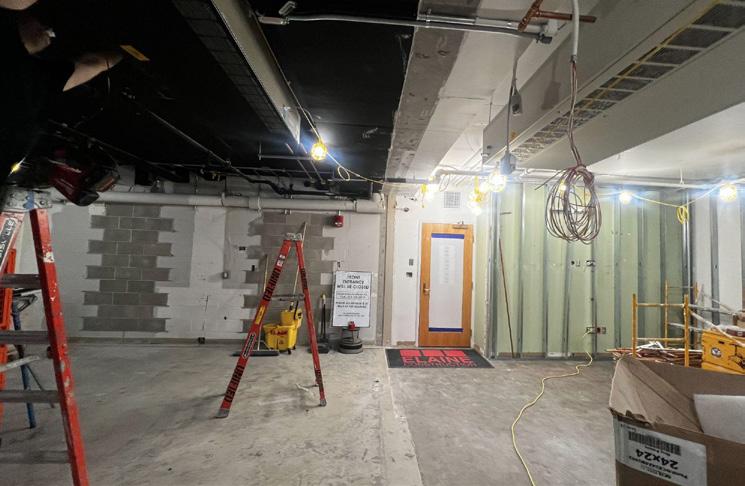
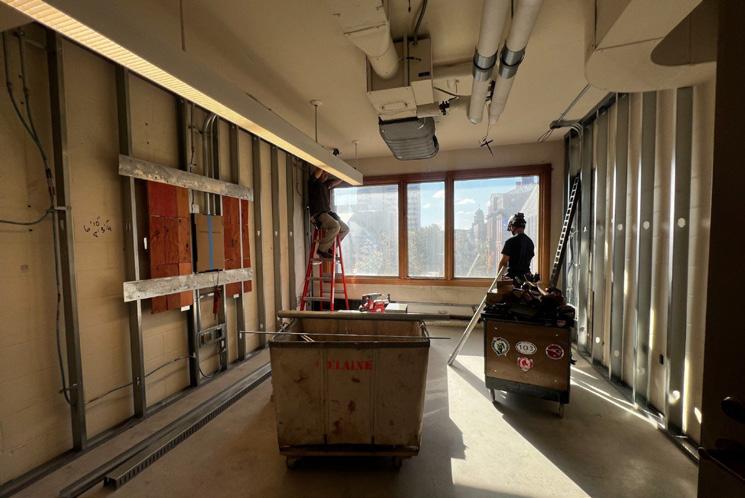

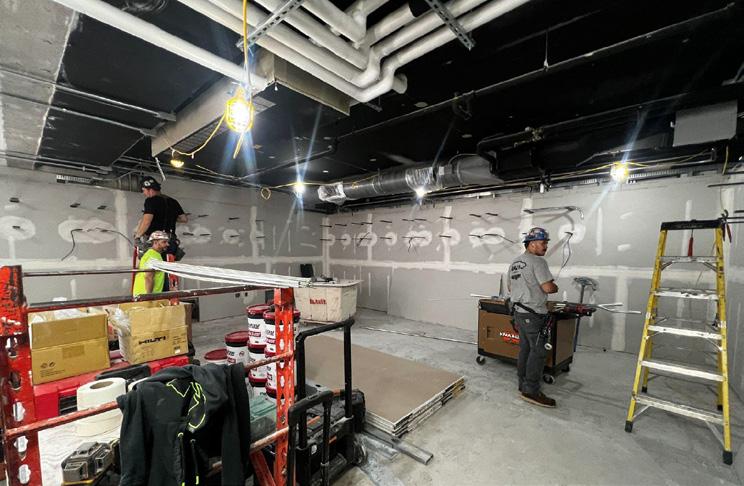

Professional Work
Neutral Studio
Project Phase Participation:
SD - DD Phase | 2025.05 - Current
Role in Project:
Senior Designer
Location: Milwaukee, Wisconsin
At Edison, the goal was to create a high-performance mass-timber building that feels as restorative and natural as it is striking and progressive. As part of the in-house design team, I participated the design of the Level 1, Level 7, and Level 31 amenity spaces, shaping environments that serve as touchpoints of wellness, community, and elevated living within the building’s sustainable framework. Far from being secondary features, these amenity levels embody the project’s core values - healthy living, sustainability, and genuine comfort - while maintaining a cohesive architectural language and offering distinct, memorable experiences seamlessly integrated with residents’ daily lives and the surrounding neighborhood.

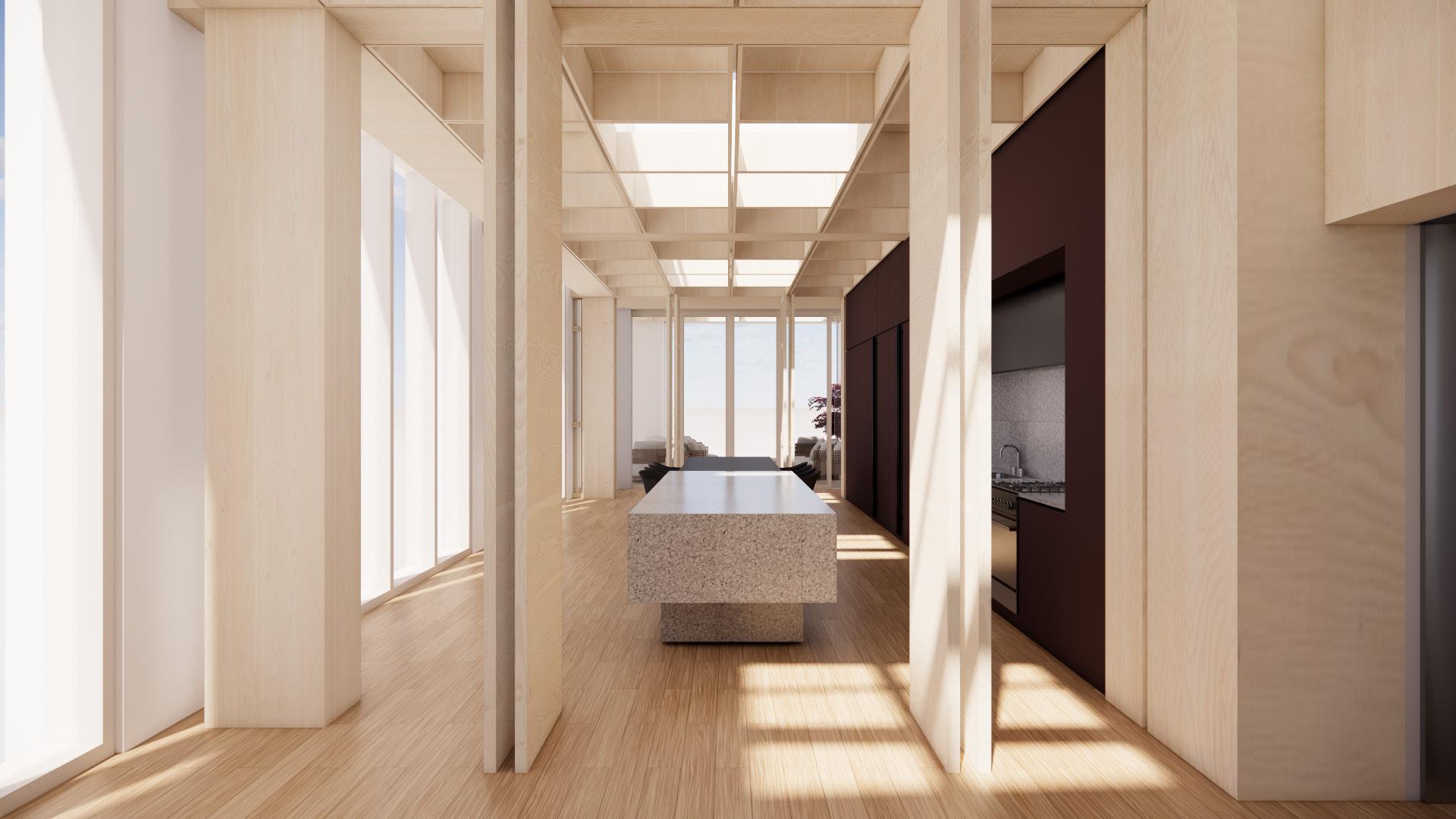




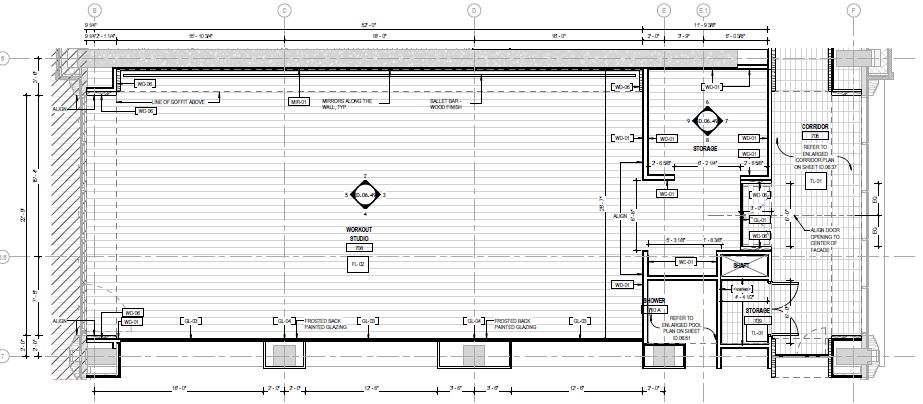




Academic Work
Beijing University of Civil Engineering and Architecture
Location: Chengdu, China
Graduation Thesis Project 06/2020
Individual Work
Instructor:Qiuye Jin





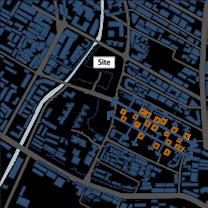
This design explores the new hotel concept post COVID19 and the new residence model for remote working people. The COVID-19 opened our eyes to the possibility of “work from home”. In the future people may choose to live in any place of the world for a few months or a few years while they work online. This hotel is based next to the most famous attractions in Chengdu and is the most culturally distinctive place in the city. You can experience the unique local culture, entertainment, and lifestyle, such as drinking tea and playing mahjong in this hotel. The connecting corridors and public function areas on the second floor contain a variety of entertainment and leisure functions with local characteristics. The variety of entertainment options in the hotel also provides opportunities for visitors from all over the world to socialize. In addition, visitors also have the flexibility to select the length of stay, and the hotel contains a wide variety of rooms, such as long term, short term, and daily rentals. People can come to Chengdu, live in this hotel for a few months, and enjoy the Chengdu lifestyle and entertainment after work. It has a regional character of Chengdu and a potential for future development.
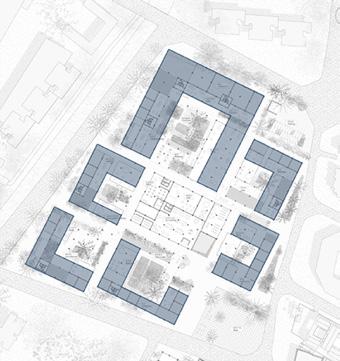

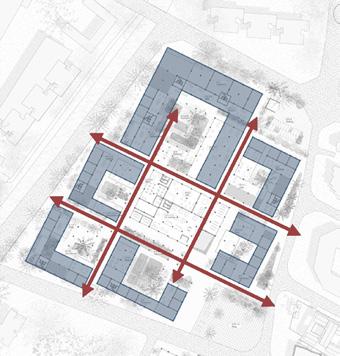




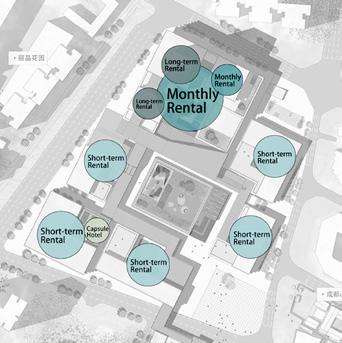


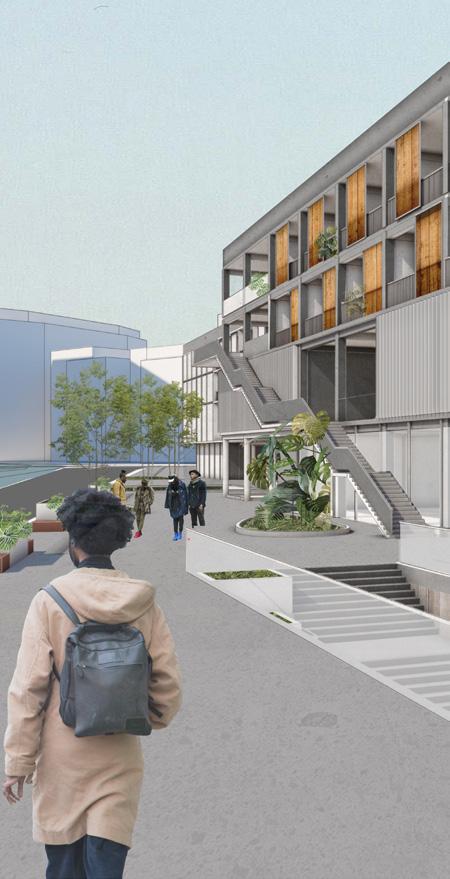

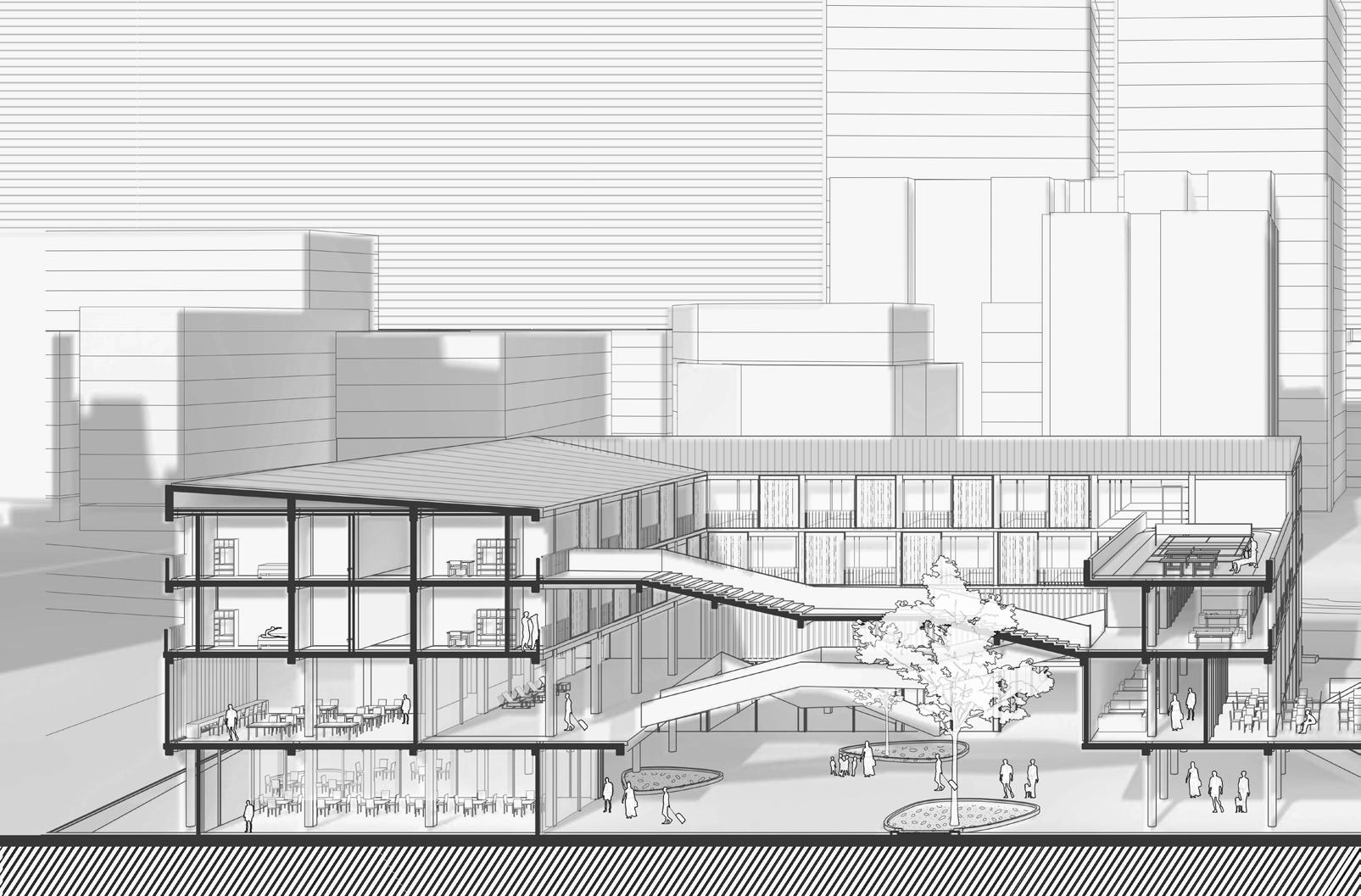
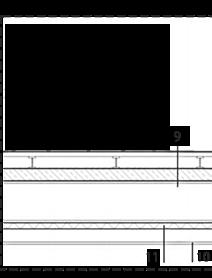
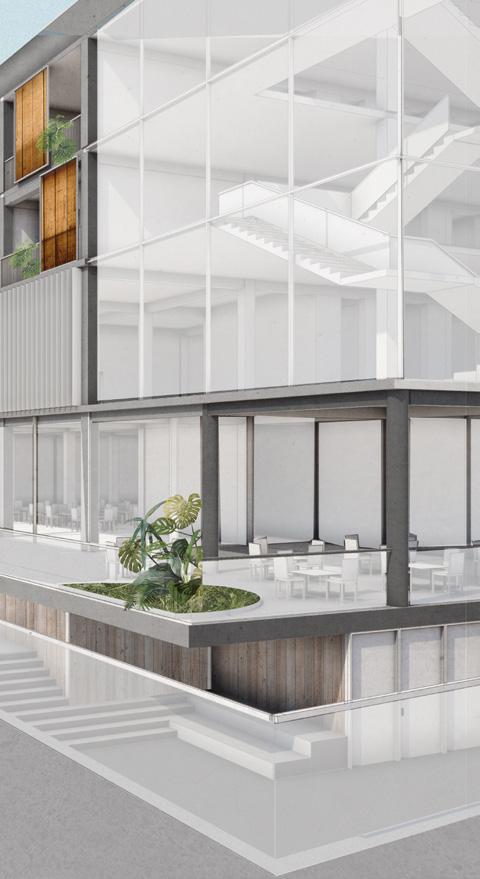
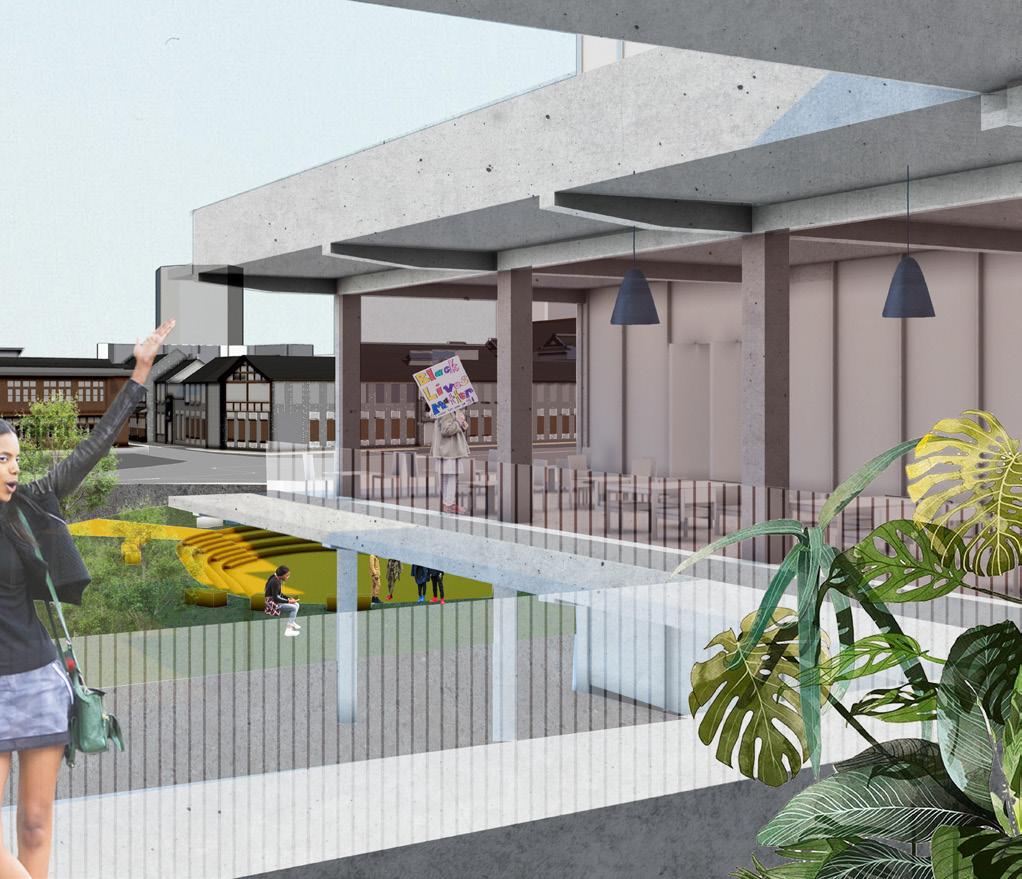

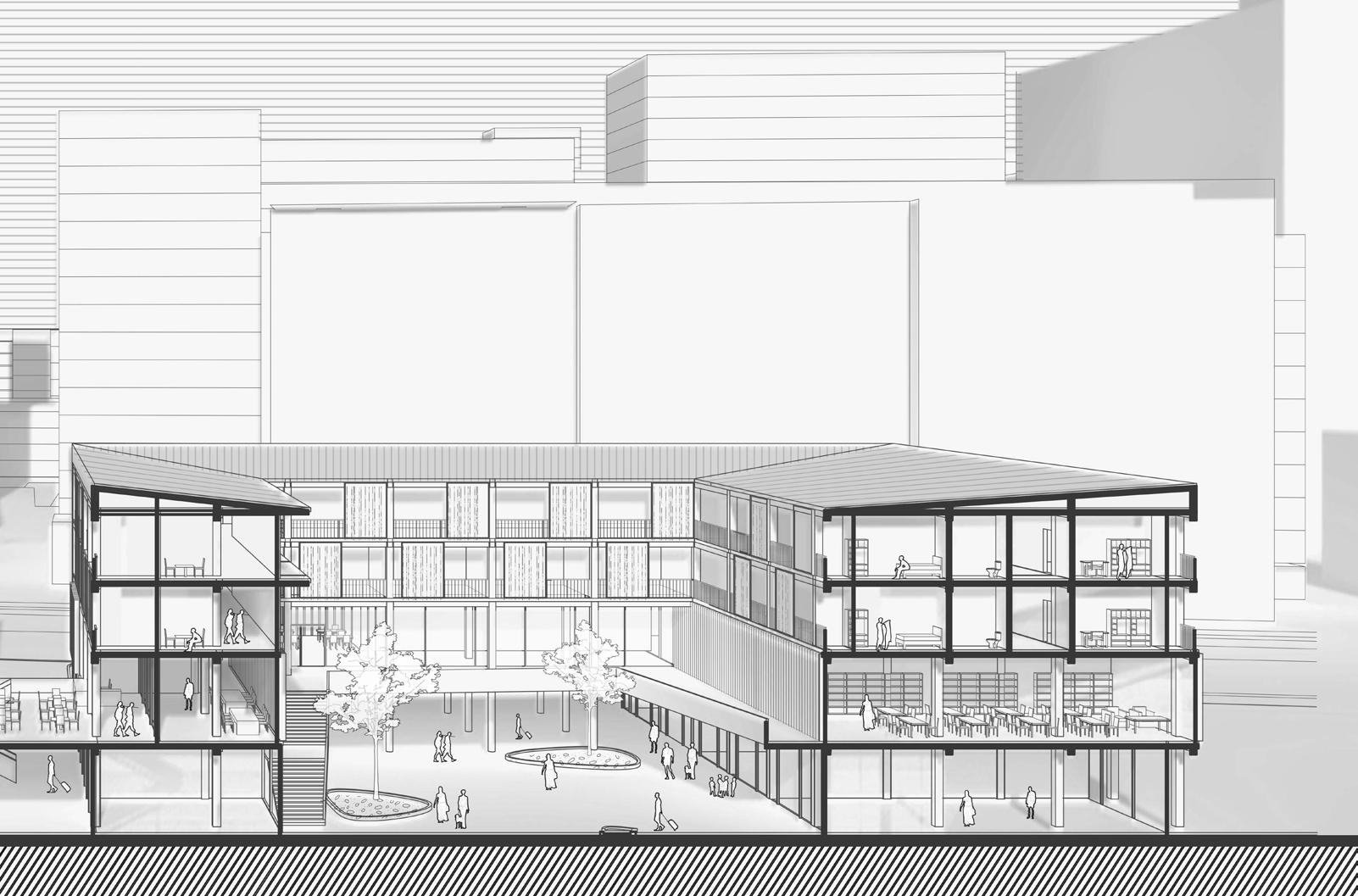


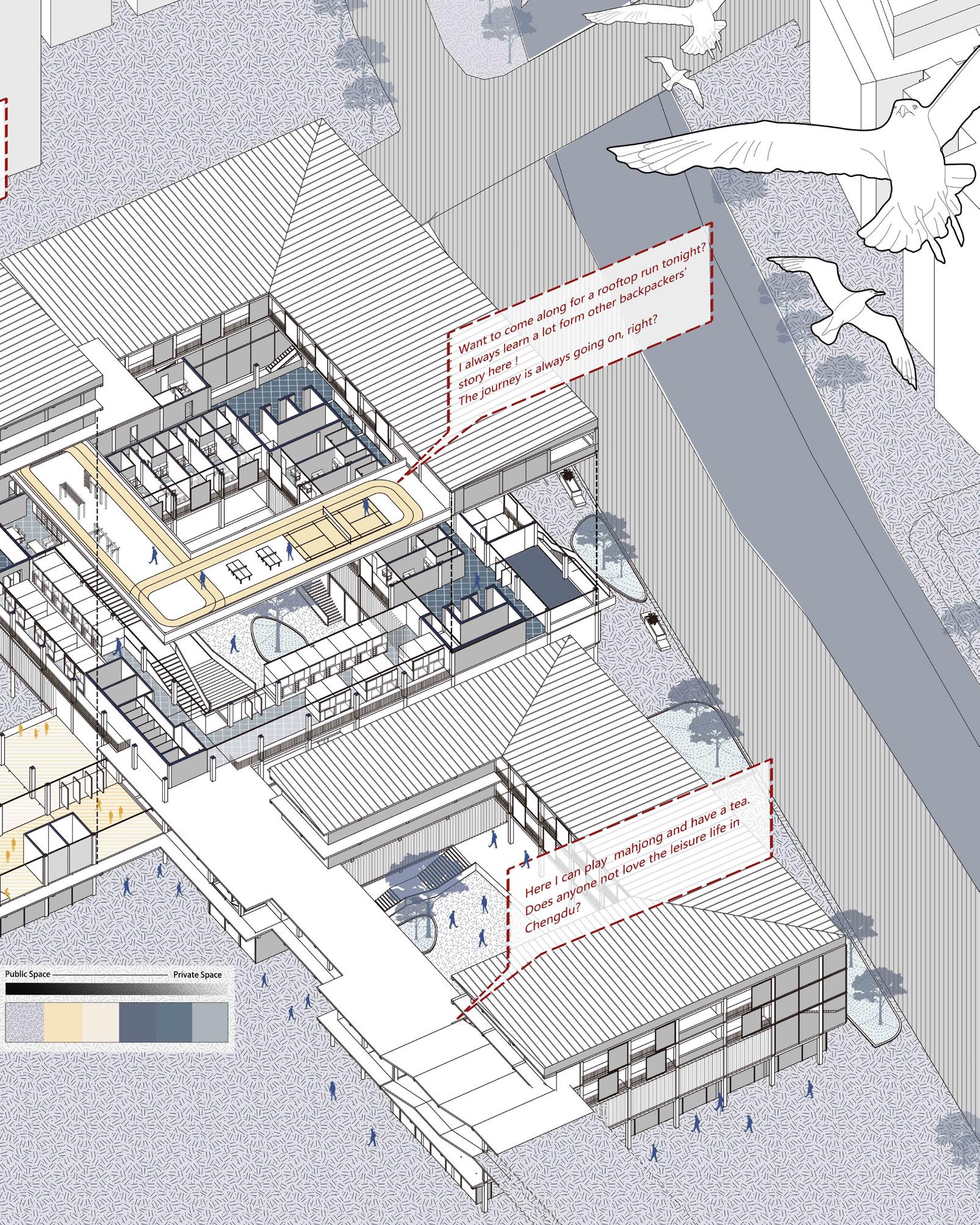
Professional Work
Neutral
Project Phase Participation:
Public RFP
Role in Project:
Designer
Location:
Madison, Wisconsin
The Brayton Lot Development is a 531,000SF mixed-use superblock in downtown Madison. The project combines 414 residential units (including 69 affordable homes), 70,000SF of office space, and wellness and retail programs within a walkable, transit-oriented block.
Guided by “Life > Space > Buildings” framework, we created four distinct street frontages, a central courtyard, and an urban plaza to weave public life seamlessly through the block. A composite mass timber structure, all-electric systems, and Passive House and Living Building Challenge targets anchor the project’s sustainability goals.
The design emphasizes a rich public realm: permeable ground floors, pocket parks, and layered green spaces at multiple levels provide moments of respite and connection, while sculpted massing preserves Capitol view corridors and enhances solar exposure.

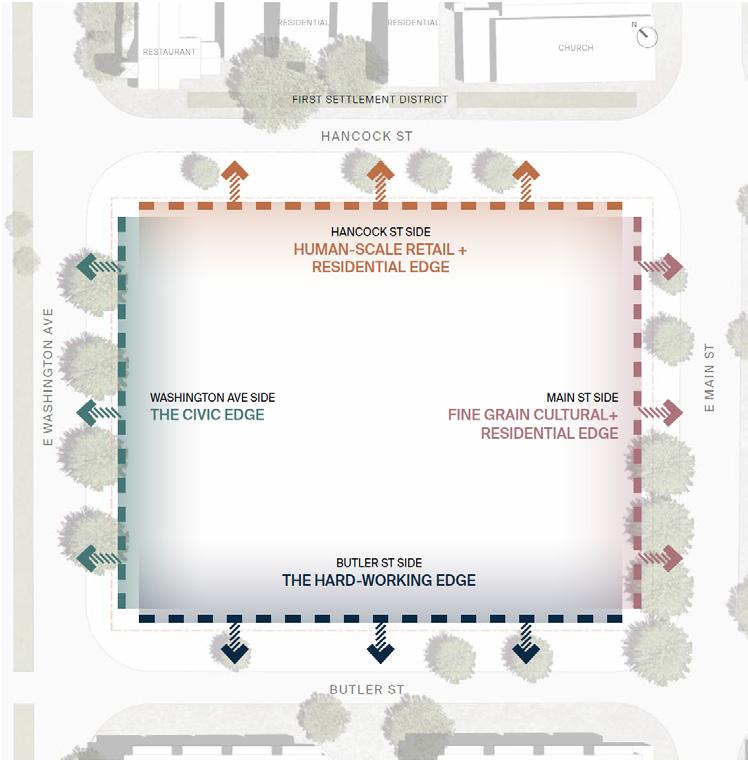






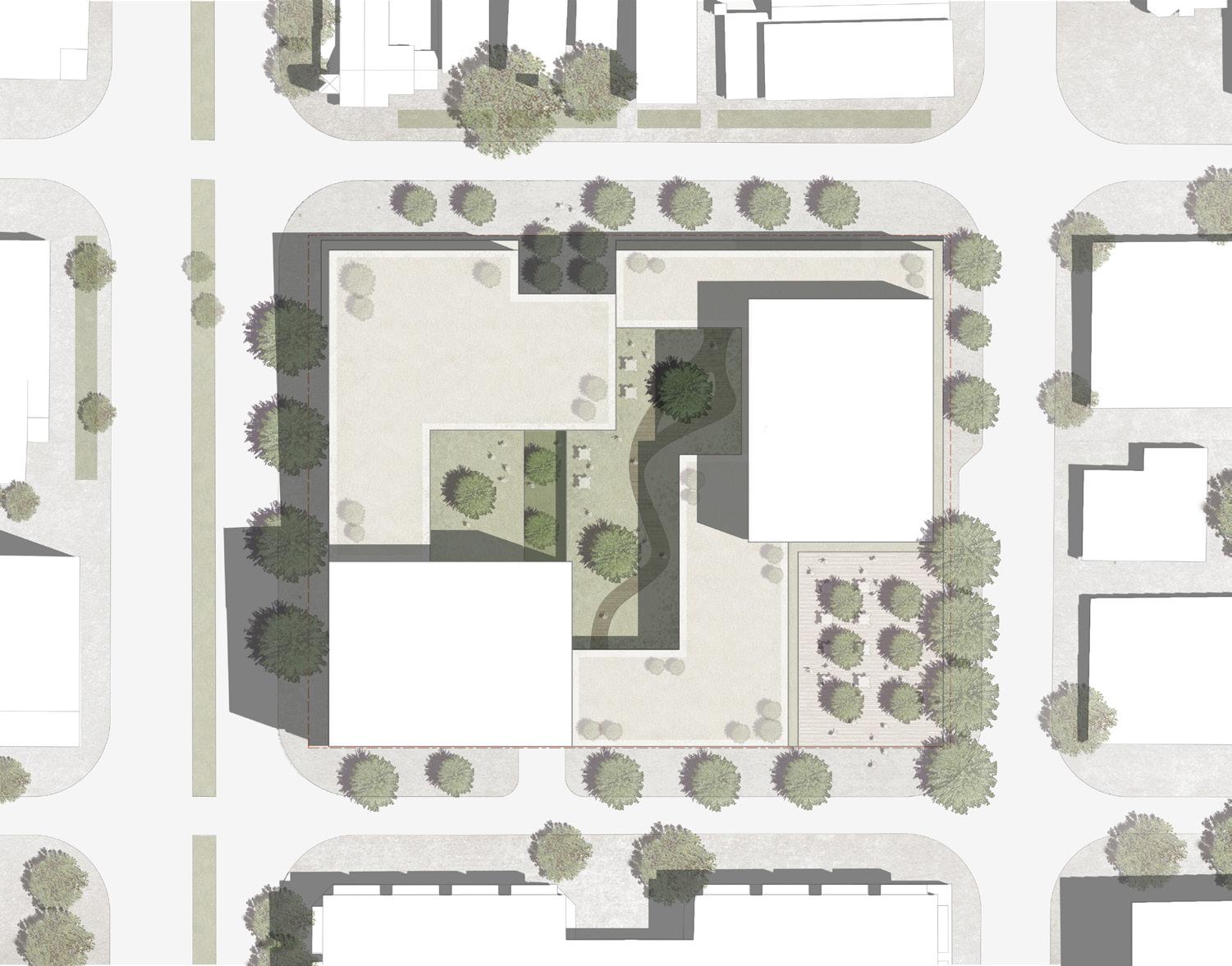
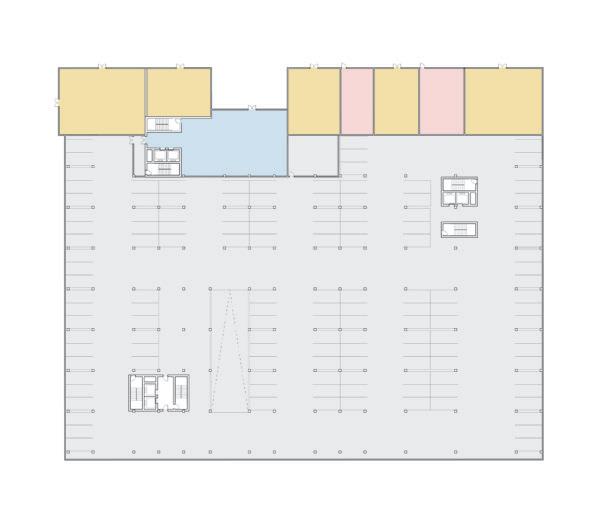


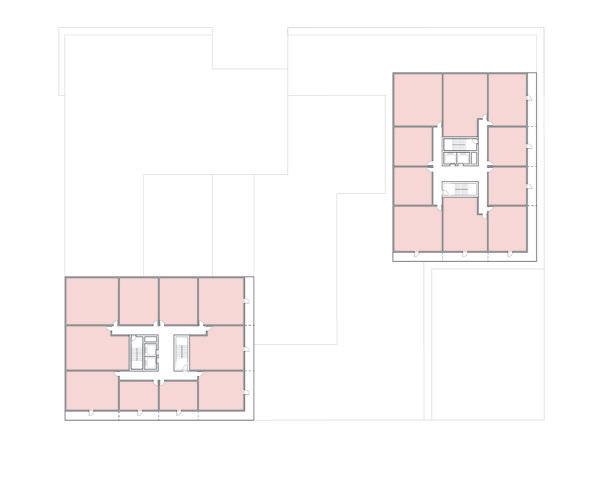



Bruner/Cott Architects
Project Phase Participation:
Concept Design | 2023.3-2023.4
Role in Project:
Designer Location:
Boston, Massachusetts

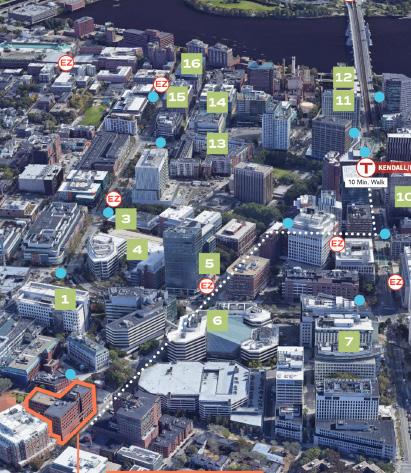
Hybrid work continues to evolve across North America. The office vacancy problem is growing since the pandemic, while at the same time the housing shortage grows.Boston is also facing a major housing crisis. As increasingly high demand for limited inventory continues to drive residential prices through the roof, local city and statewide administration have made housing a priority.
How about reimagine these spaces as residential units? We believe there is huge opportunity in office-to-residential conversion.
201 Broadway is an 8-story, office and retail complex built in 1988.This office building is located in the heart of kendall square in Cambridge. Kendall Square is close to MIT, Google, Microsoft and other tech firms, and is an internationally recognized innovation district that is propelled by the synergies of imagination and ingenuity. There are many students and young people working in the area, which makes it a very vibrant area. 201 Broadway also close to many nearby restaurants, local shops, entertainment venues, educational institutions, large corporations and major transportation hubs.
After researching the site context and building form, we believe 201 Broadway has great potential to transform from an office building to a vibrant apartment complex.
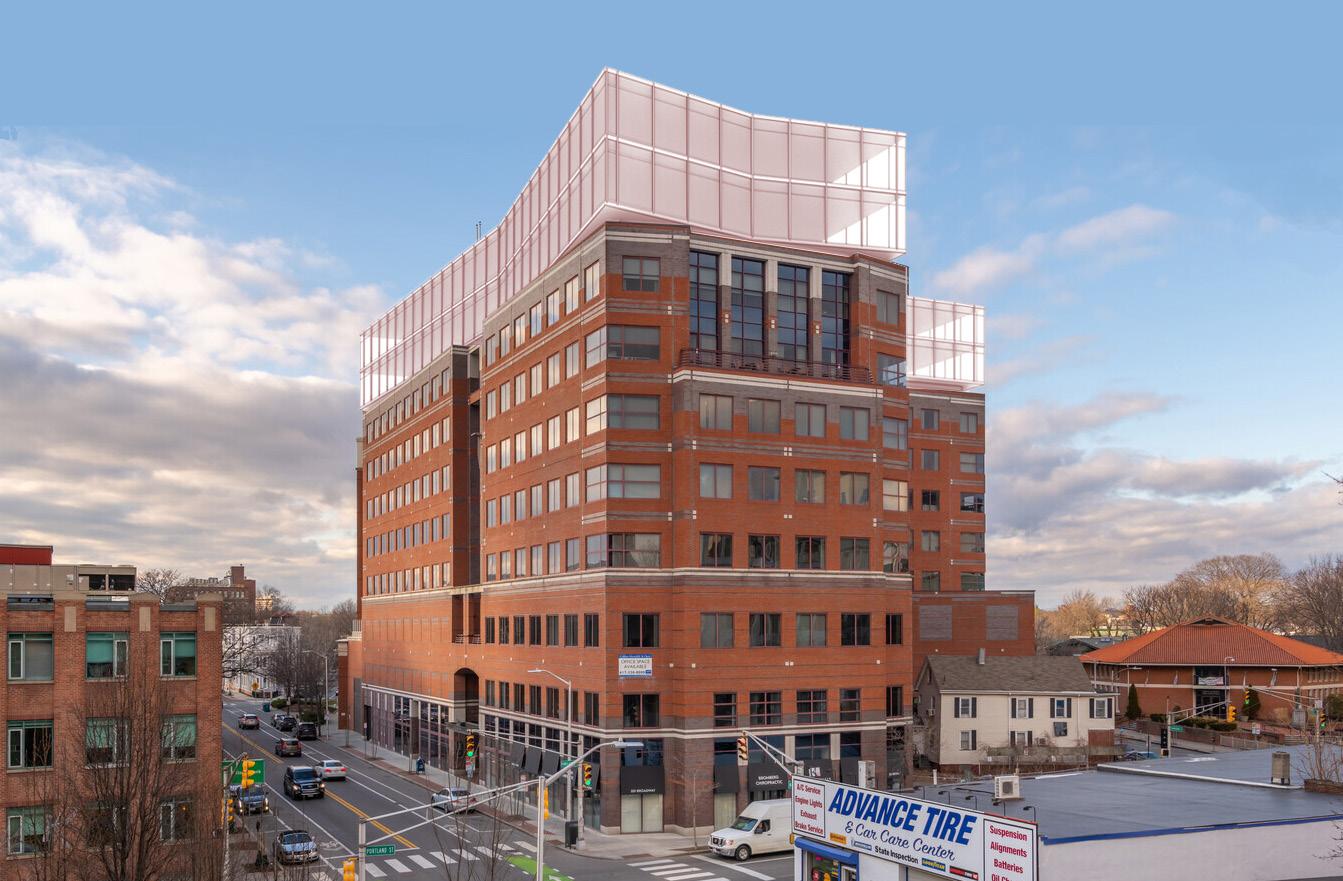
To increase residential space, We explored adding space in the garage. We plan to remove the parking ramps in 4A, 4B and 5A and convert them into residential space. It could add 15 more units or 8,000 SF amenity space. The challenge here is daylighting and views. Due to building code restrictions, the tight setbacks reduce allowable fenestration. 15 more units could be add here but the smaller windows and little daylight can be a challenge for room rentals. After comparing the two options, we think that locating more amenity and tenant storage space is the best choice. Amenity and tenant storage space could be less sensitive to the east elevation views and take advantage of the north south views.

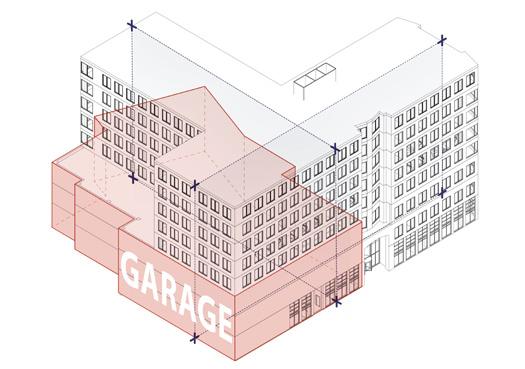



IBC: 705.8: Openings limited by distance from property line





Unit Type



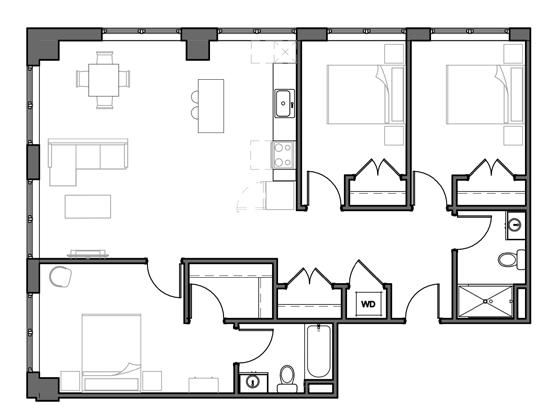

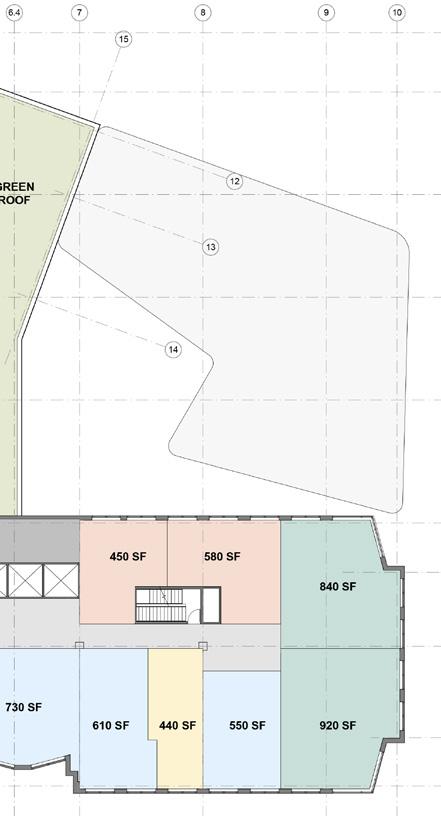
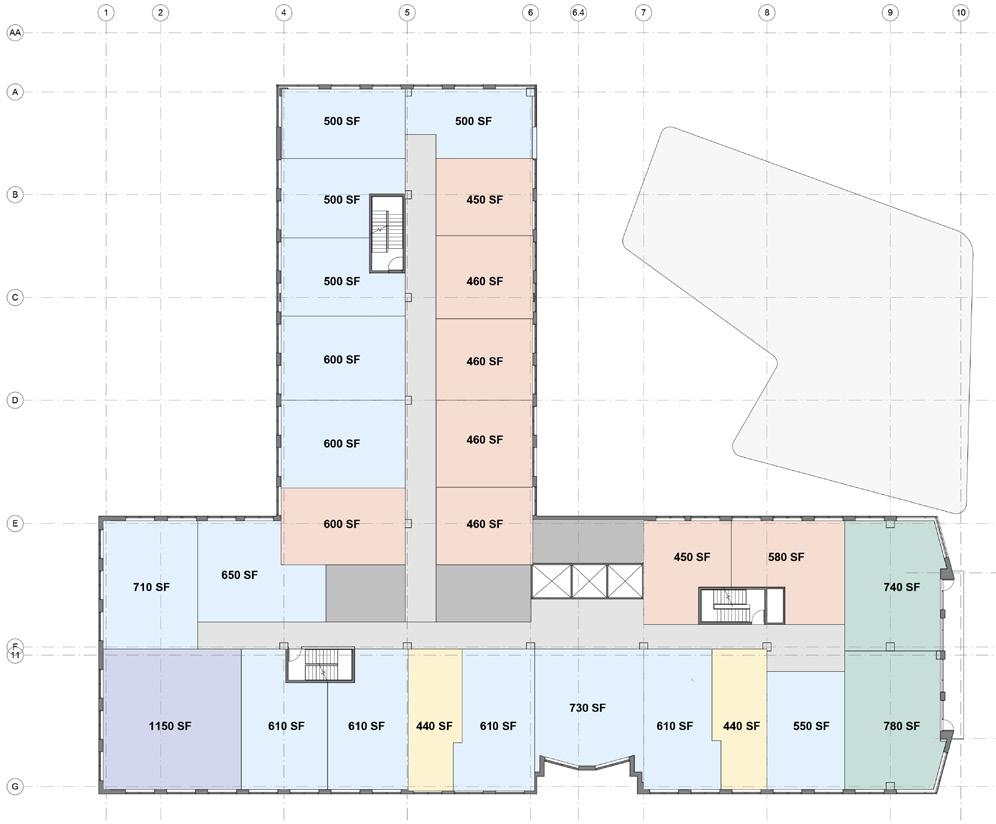
FIFTH - EIGHTH FLOOR

03 - THREE BEDROOM: 1150 SF

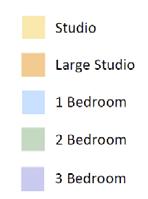
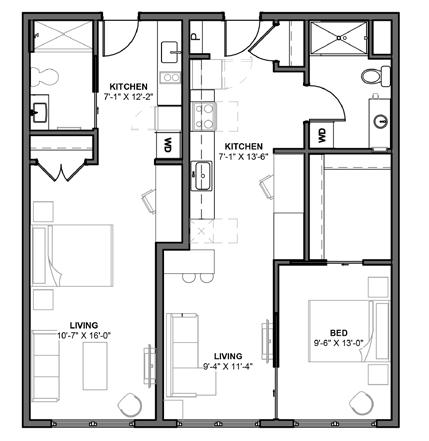
04 - STUDIO: 440 SF & ONE BEDROOM: 610 SF
University of Pennsylvania
Location: Philadelphia,PA 05/2021
Collabrators: Zechuan Yang
Role: Concept Design(80%), Computational Design(40%), Material Research(50%), Modeling(80%), Section Drawing(100%), Rendering(100%)
Instructor:Masoud AKBARZADEH
The motivation of this project is to combine novel 3D graphic statics, a new structural design method, into architectural design. My approach realizes creating a stable curved folding structure with 3D graphic statics and applying it to a mid-rise timber office building. 3D graphic statics is a powerful and intuitive technique for structural form-finding and it provides an unprecedented control in design. Complex spital structure forms can be generated easily by using this methods.
Curved origami structure is an elegant form relatively rarely seen in an architecture scale, therefore in this project, we try to use two different ways to form finding curved folding structure. Under this logic, we develop a funnel formed colum as building components. Then this funnel form structure is extended horizontally in the form of curved folding to form a floor and ceiling system. The columns are also used as traffic flows, leisure space, reading room, and small garden.
The north side of the building is Market Street, , with office skyscrapers rising on both sides. The blocks on the west and south of the building are more diverse, with museums, chapels, and residential areas. The buildings are shorter in height. Therefore, the building has a continuous terrace on the west side to accommodate the changing heights of the city's buildings. It can also bring more sunlight into the building. The terrace of the first and second floors are open to the public and help to create a vibrant neighborhood.


The curved origami structure is analyzed to understand the basic logic of curved folding.The abrupt change in the surface direction and curved surfaces have the potential to generate complex geometries.
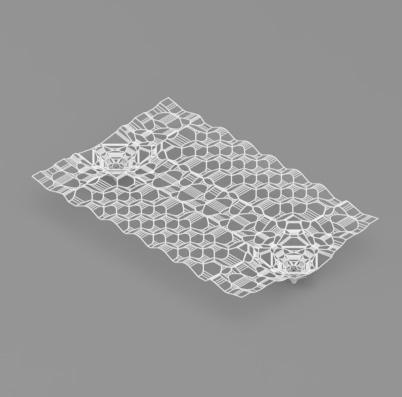



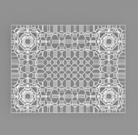




The origami structure is analyzed with the help of 3D graphic statics, so we can understand the flow forces. Then wecan develop a suitable structural module as building components.
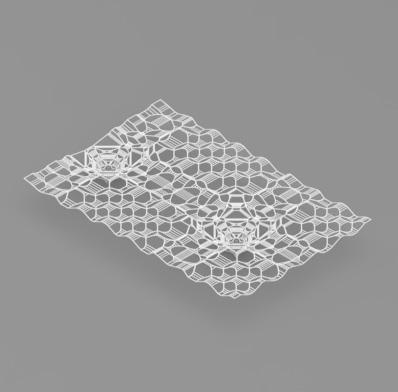
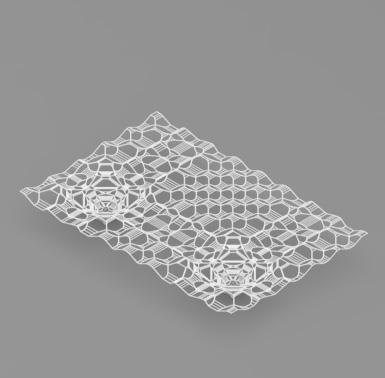
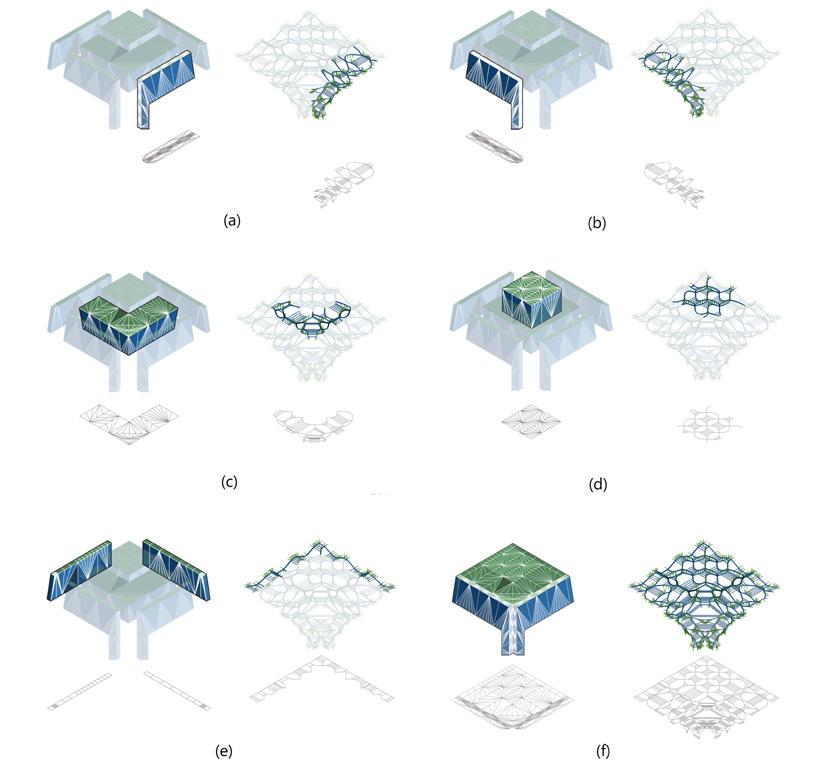
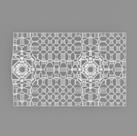
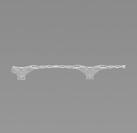
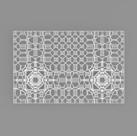

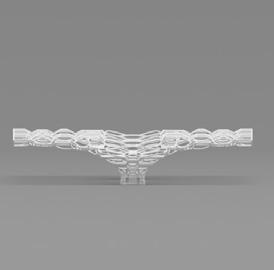
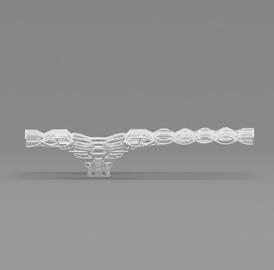



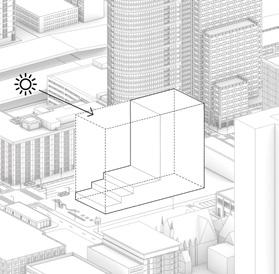

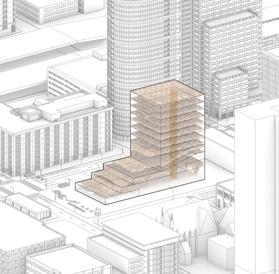


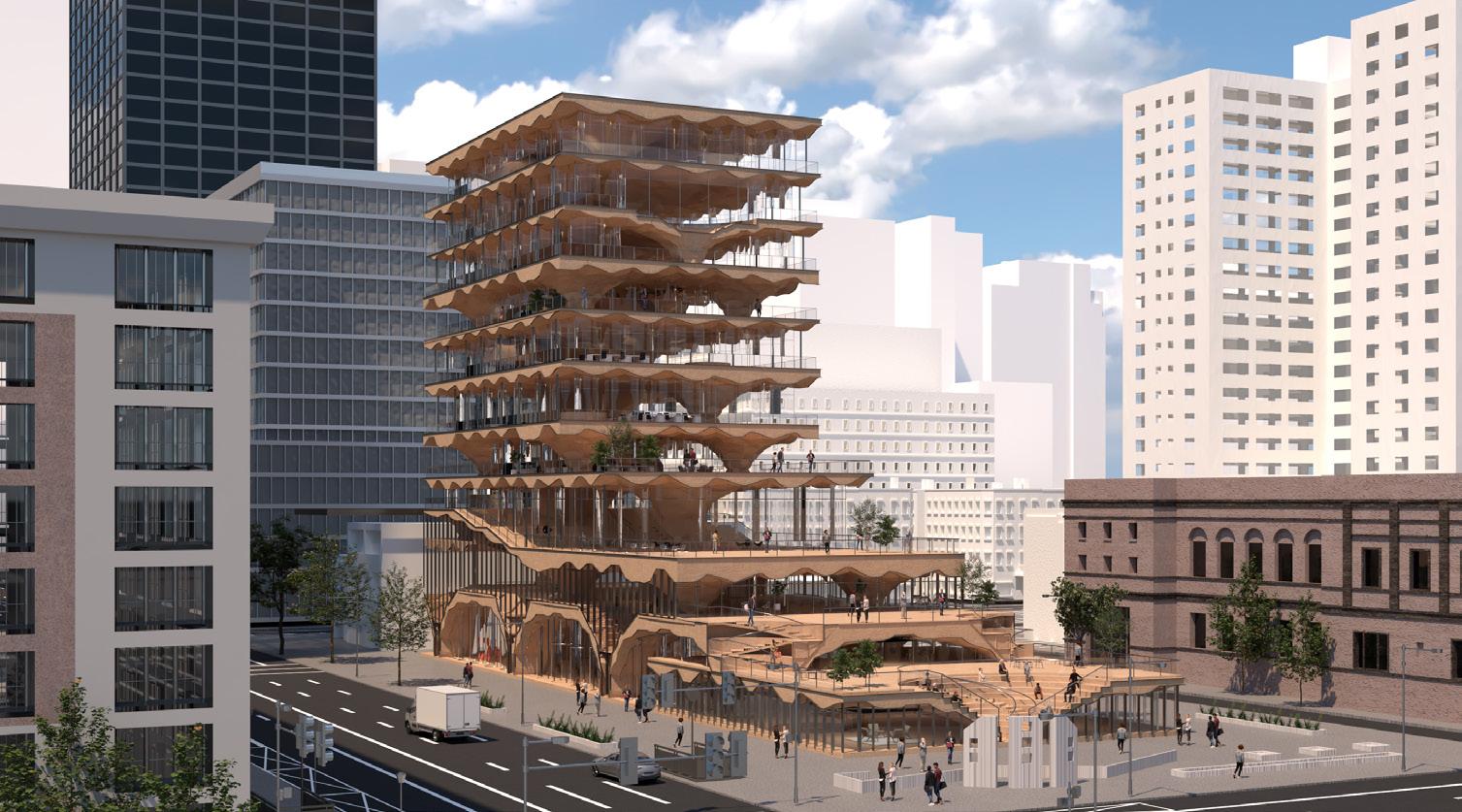
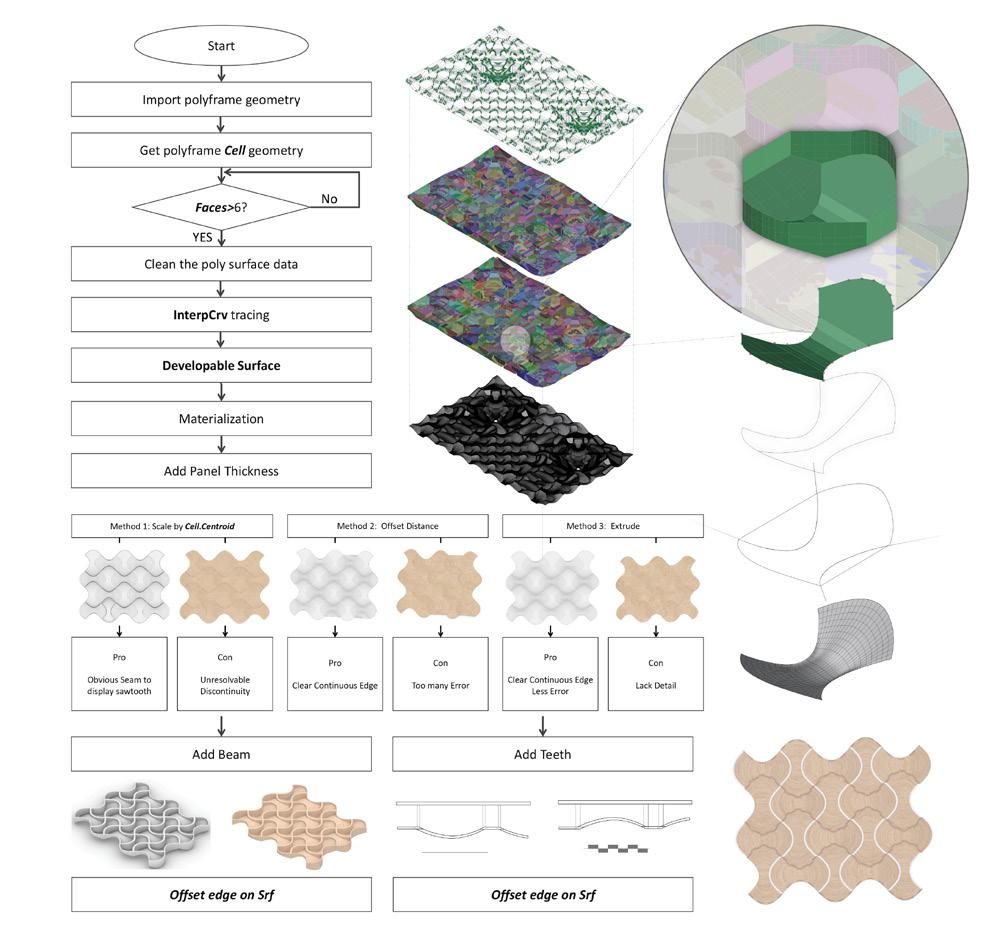

The form diagrams in graphic statics represent the geometry of equilibrium structures, but they do not carry any material information.So next step is to complete the materialization of this structure.In materialization part,we use python as a tool to turn the structural skeleton generated by 3D graphic statics into a curved surface model. The flow chart shows our main logic of materialization computation.
In addition, this structure can be prefabricated in the factory using digital fabrication methods. The form consists of several standard modules: columns, column-to-column curve folding, and in-fill ceiling. Hence from the perspective of prefabrication, the production of the module can be standardized. We can use Machines to bend and press CLT to the curved shapes, The robotic arm mills finger joints on the panel. Then these panels can be assembled on site and use finger joints and screws hold each piece together.




